cereal-before-milk
11 posts
♡ sometimes i write about manga history, feminism and LGBTQ+ in manga and female mangaka ♡ shoujo and magical girls lover ♡ 23 ♡ She/her ♡ ENTP♡
Don't wanna be here? Send us removal request.
Text
Q-TA MINAMI
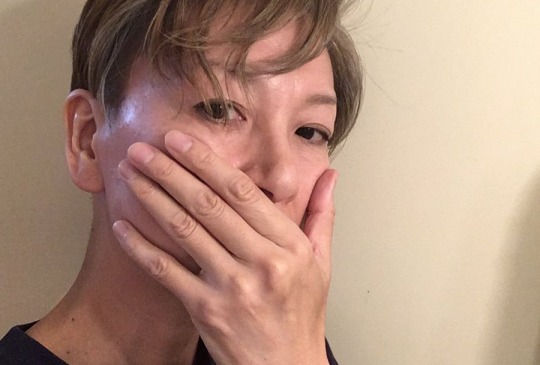
is a non-binary, bisexual, and feminist mangaka. Their manga stands out for dealing with issues such as sexuality, both in adolescence and adulthood, motherhood or everyday life. Which is why the demographics in which they are best known are seinen and especially josei.
Also known as Kyuta Minami, were born in Unnan City in Shimane Prefecture on January 13, 1969, although they currently live in Tokyo.
Q-ta graduated from Joshibi University of Art and Design Junior College Department of Design. Minami began working as a doujinshi artist during college and continued after graduating. Although at first they weren't very successful and couldn't make a living from it, so Kyuta was a "Pooh/ Poo Taro" (プータロー slang for unemployed, normally this term is not used in homeless people -wikipedia). During that time, they were living in the south exit of Koenji, Suginami-ku, Tokyo. That is why it is believed that hence their name, "South (Minami) Q-ta" (南 Q 太).
Their "official" debut on a large scale and that had an impact on the market was in 1992, with the Let's Play (Asobi ni ikô yo) manga in Wanimagazine (an adult/erotic content magazine) and obtained a mention Honorary Young Jump Rockie Award. Although already in 1990, the mangaka obtained an honorable mention in the Afternoon Four Seasons Award, in a category of young cartoonists, this caused them to take two years off. Those were the beginnings of what would be a long run of honorable mentions, such as the 1994 "Weekly Young Jump" rookie award, awards and drama adaptations of his manga, such as Yura Yura, which was dramatized in 2003 by the television channel of BS-i (now BS-TBS) in the Drama "Koisuru Sunday".
1996 and 1997 were very important years for Kyuta since they published manga in up to 3 different publishers, including the great Shueisha. All that variety made Minami achieve greater recognition and even loyal fans of their manga.
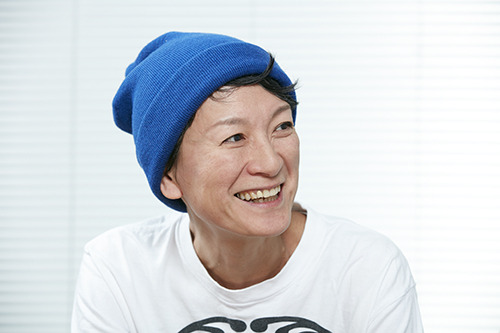
About their private life, Q-ta has been married three times and divorced twice. Their first marriage was with the mangaka Sabe, with whom they had their first daughter. After her birth, the mangaka changed her style a bit and began to make more childish manga and dedicate it to their daughter, like the manga Children's Games, published in 2003, which contains her personal experiences.
Their second marriage was with the poet Koichi Masuno, in between their first son was born. But there were bad feelings between the mangaka and the poet, so after the marriage, Masuno agreed that he would see his son once a month, something that Q-ta tries to avoid. The poet wrote novels and essays showing his resentment and even regret for the divorce (in case you are interested the book is Marriage disqualification, I have only found it in Japanese), in this he said that the mangaka earned more money than him.
Minami's last marriage is with the manga editor and ex-husband of mangaka Marie Yasuhiko, Masami Otsuka. With Masami, they had a son and a daughter, in addition to the son the publisher had with his first wife. So while raising a total of 5 children and taking care of 4 cats, Q-ta Minami managed to publish more than 40 manga, many of which are short stories or one shots, but unfortunately very few have been published outside of Japan.
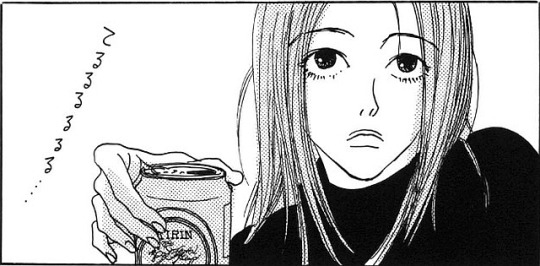
Their drawing style reminds me of Kyoko Okazaki's style. It could be said that mangakas like Q-ta Minami continued with the legacy that the mangaka left empty, even if it was in an unrelated way. In fact, Q-ta is considered post-Kioko. It is noticeable at first glance that their drawings stand out for the almost absence of detail, although the dialogues in his scenes also follow the same pattern. With the slightest bit, the mangaka immerses us in their stories that are closely linked to the day-to-day life of women, girls, adolescents, and young adults.
Their manga are very peculiar (just like Minami) and they are closely linked to the everyday, to the weight of the monotonous and to trying to break that monotony that we have all faced at some point. Or not, the mangaka may simply want to demonstrate the drama that can exist in the "simplicity" of everyday life and, on many occasions, adding eroticism. And something that is a pleasure to read about their mangas is how Q-ta treats the sexuality of women, especially in adolescence/ young woman. Minami isn't t afraid to delve into a topic, which is often silenced or treated from a male gaze, and show how the girls who are the protagonists of their manga enjoy (in many cases) discovering and showing her sexuality.
➳ SAYONOARA MIDORI-CHAN 1997
*It isn't suitable for all audiences. It contains adult material*
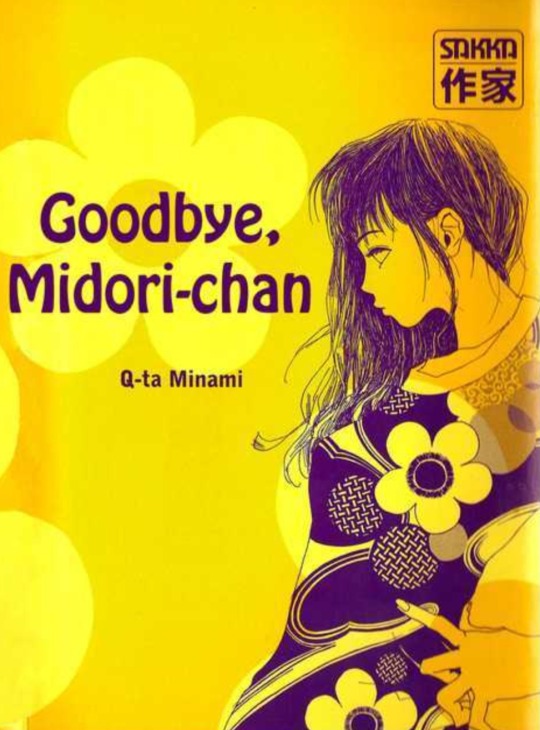
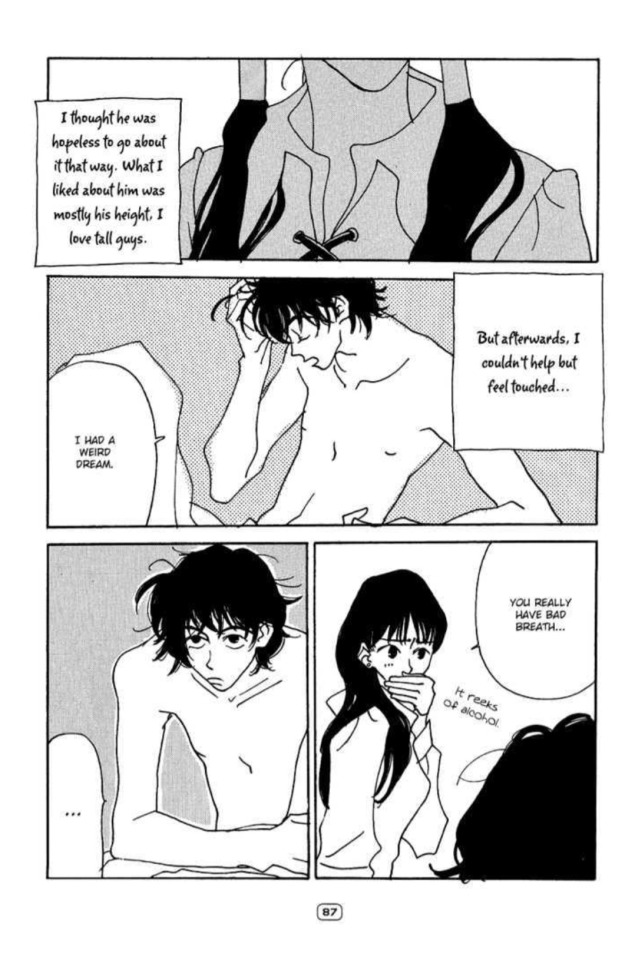
- demographic: josei
- genre: romance, slice of life, drama
- French
Yuko, the protagonist, is a 20-year-old girl who is not very clear about things or what she wants in life, with the exception of one thing, her "boyfriend" Yutaka. She doesn't have hobbies or friends, nor does she look for them, although with two jobs it's not like she has time for it either. At night, she works in a bar next to where Yutaka works. That's where all the misfortunes happen to the protagonist, some even dangerous. Yuko should never have taken that job.
It is a very short story, so risking I will say that you do not expect a sublime masterpiece. Even so, it will surprise you how, in only 7 chapters, the characters are so well written and are so realistic that you can even identify with them. The narrated situations, the union between the employees, the relationship between the protagonists, the friction between the women, etc. They are things that could have happened to you, and that makes it interesting.
- in 2005 it was adapted to live action.
➳ POP LIFE 2016-2018
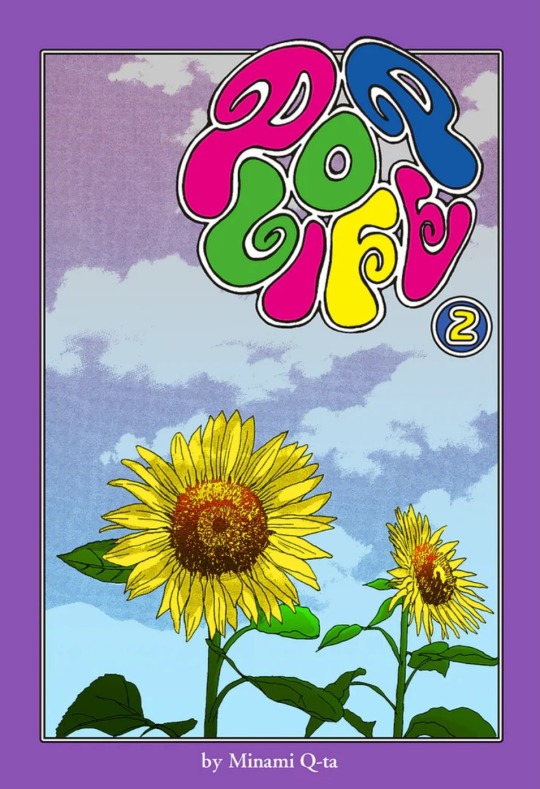

- demographic: seinen
- genre: slice of life
- English
Sakura, a mangaka, and Akemi, an event organizer, are two single mothers who end up living together and supporting each other in raising their children. The two families live in a somewhat small apartment, which could suggest that it makes it difficult for two small children, a 16-year-old teenager and two women, leading a comfortable life. But the reality is completely different and mothers seem to be happier in their new lifestyle than in the life they led before.
A breath of fresh air on motherhood, taken in a realistic way, showing broken families, but in a certain way complete. Although it is not only about motherhood, but also about death or how to handle a divorce. Many of the experiences that we see in both women are taken from the author's life, narrated from another perspective.
➳ HANDS OFF MY GIRL 2005
*It contains adult material*
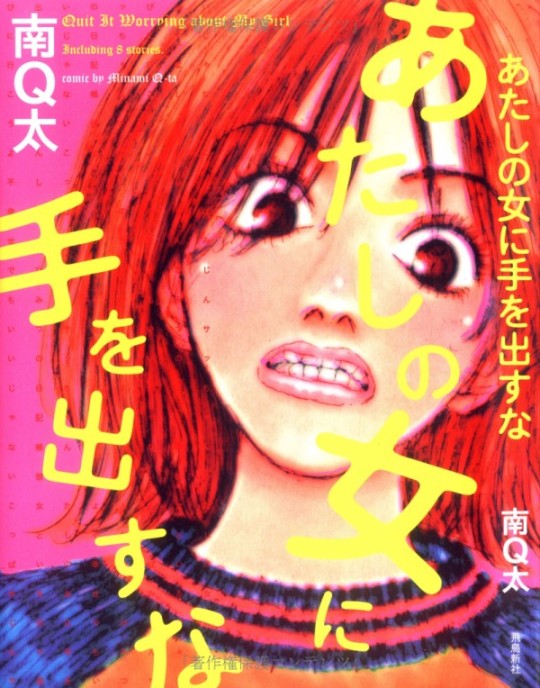
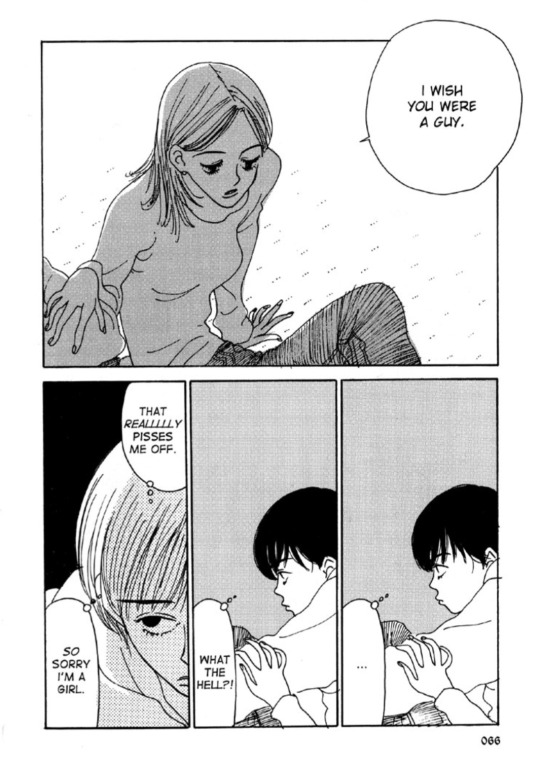
- demographic: josei
- genre: slice of life
- Spanish
It is a compilation of a total of 8 stories, each one with a different genre, but all with the Q-ta Minami touch, so it cannot be classified into a specific genre, although the most abundant is slice of life.
The vast majority of these stories contain explicit sex, from TL to GL (yuri). But it is much deeper, it is not only simple eroticism. Hands off my Girl also deals with topics such as lies, jealousy, infidelity, unrequited romance, etc. Like in the second story, Broken Into Pieces, where the protagonist has sex with the man she loves, but he has a girlfriend, and he is supposed to love her more than the protagonist.
But there is something very curious, and it is that the last two stories have nothing to do with the rest. Diary of Another Young Girl narrates the life of a 10-year-old girl who is always in the clouds, has no friends and only trusts her cousin. And Days Spent with Her is an autobiographical chapter of the mangaka that narrates what a day is like with her and her daughter, who is still a baby.
➳ THE BLOOD RED BOY 2022
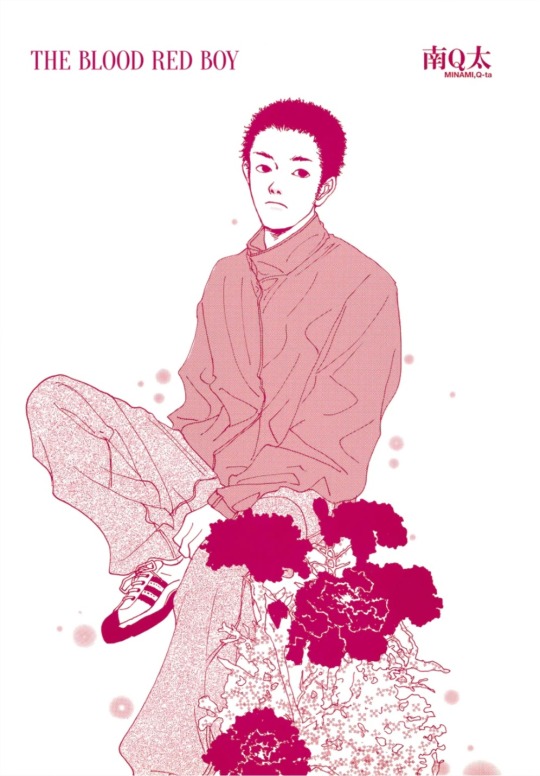
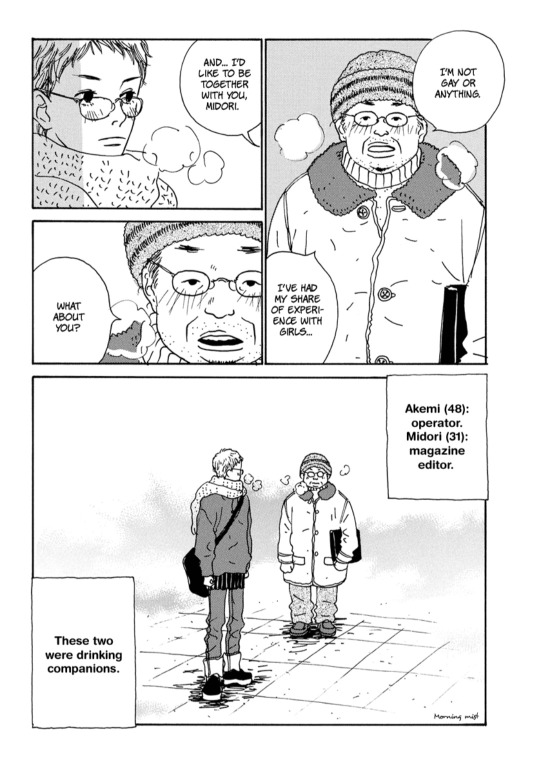
- English/ Spanish
- genre: drama, romance, bl
It is a very interesting one shot and only has 16 pages. The protagonists are nothing alike, they lead completely different lives and the only thing they have in common is the bar where they are going to drink and the reality from which they are fleeing. It is a story that touches on topics from gender to loneliness and the search for self-love. These are like pieces of an incomplete puzzle and you are the one who has to fill in the missing gaps.
➳ NOT ALL GIRLS ARE STUPID 1996-1997
*It contains adult material*
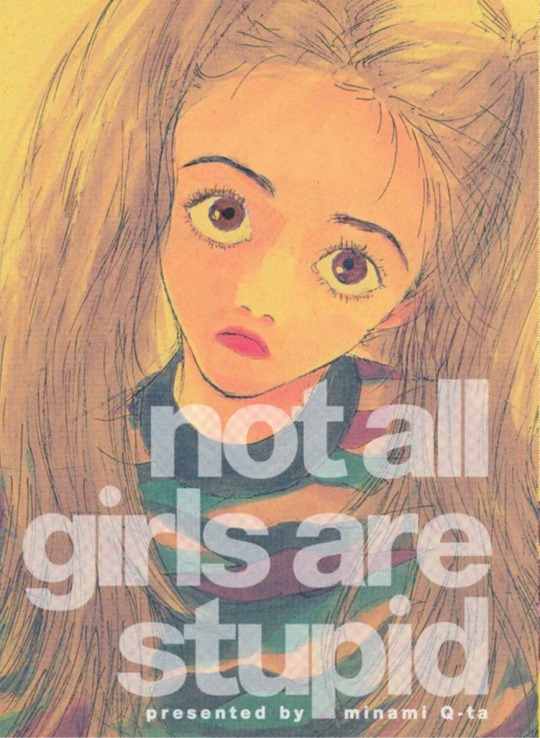

- demographic: josei
- English
Guess what? Another compilation of interesting short stories. Where girls start to discover their sexuality, fall in love, get disappointed and live their lives the way they want. Although there will be misfortunes, toxic relationships, unwanted pregnancies, infidelities and a lot of detail from the Q-ta Minami brand.
Q-ta Minami's stories are not characterized by being extraordinarily long so these are ideal to read when you don't have much time, but I really don't know what you are waiting for to give them a chance.
#q-ta minami#mangaka#manga#feminist#non binary#manga recommendation#japan#Sayonoara Midori-Chan#not all girls are stupid
55 notes
·
View notes
Text
BOYS RUN THE RIOT
✰ Genre: slice of life, drama, coming-of-age, psychological
✰ Demographic: seinen
✰ Editions: spanish, english, french
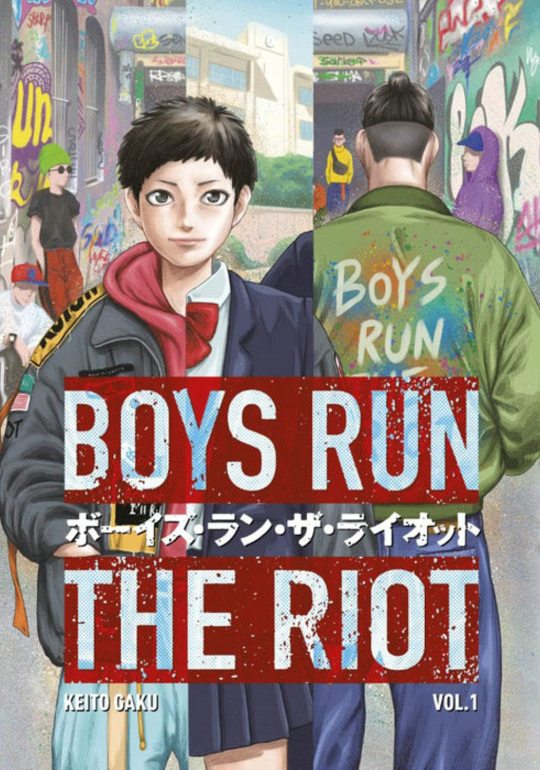
Ryo is a trans boy who has not told anyone, he is not even able to tell his best friend with whom he is in love. The protagonist has to carry the pressure of pretending to be someone he isn't every day, with the confusion and the fear of not being accepted, which even causes anxiety. But Ryo finds a safe place in fashion, as it helps him express himself and feel himself.
Jin is the new guy at school and he has a rude air, which no one seems to like very much. By chance Jin finds Ryo at one of his favorite stores and drags him along in their plan to create a clothing brand together.
It is a story about freedom, diversity, inclusion, finding your identity and breaking molds and expectations.

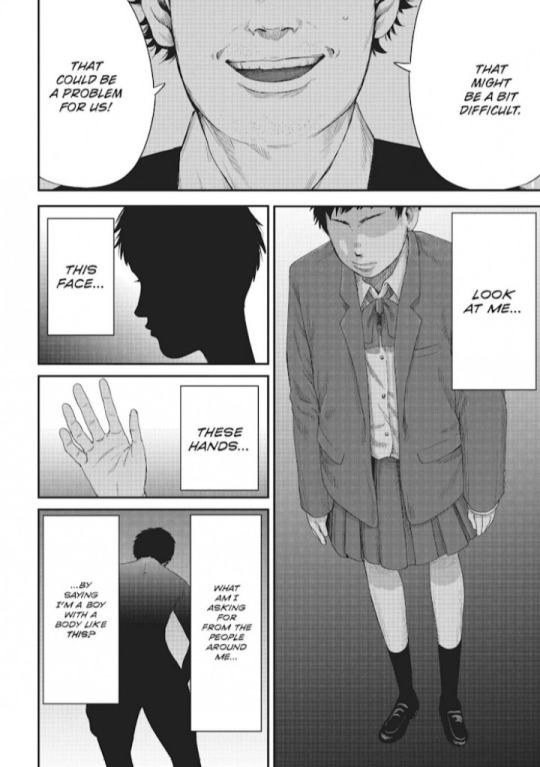
Although it may seem like a simple plot, it is not at all. To begin with, Ryo's mind is in constant chaos, he experiences anxiety and depression because he doesn't feel normal or that he fits in with society, he is not comfortable with his physique or his body, which makes him leave us with very intense scenes and makes us worry about his well-being and mental health.
Fashion here is a clear example that clothing helps us express ourselves as we really are and is even used to launch messages of criticism and freedom, which is what inspires the protagonist when making his t-shirt designs. Through his designs and graffiti, he tells his story and that of others, giving strength not only to himself, but to those who need it. It could even be a bit of a metaphor about a person's identity.
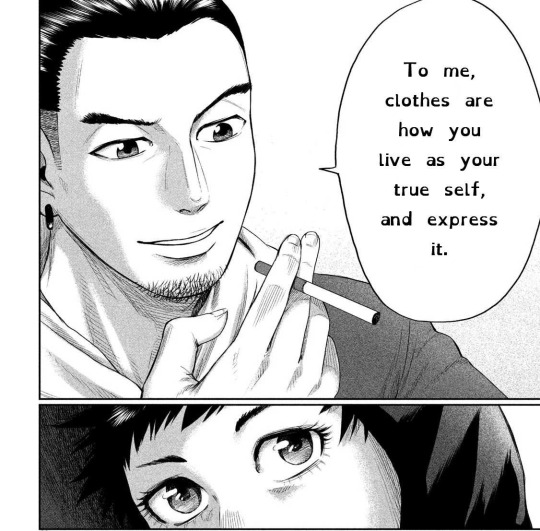
BRTR is also a clear example of real life, young boys with a goal that at times see it further than others. They realize that creating a brand is not an easy task and they are going to be disappointed more than once. And that reminds me of the ending. An ending that I've seen a bit criticized for being open-ended (Spoiler alert) and it does not make it clear to you if the boys achieve their goal of the brand succeeding or if it simply remains a high school hobby. From my point of view it is an ideal ending, which perfectly represents the topic of the uncertain future that we overthink so much in adolescence and sometimes in adulthood, not knowing what to do with your life, if you will succeed, if not, if you will what do you want, etc. Well, many of us, like the protagonists of this story, don't know and we cannot know what will happen, we simply live day to day with insecurities. I don't know if that was the mangaka's intention, but I really liked it.
✰ Some details that I found very cool and interesting are:
That the manga is full of characters that are a very good example of how to be a good ally, there are also LGBTQ characters and terms that are also defined, so if you want to learn a little more about the subject and inform yourself while you have fun reading a good story, this is your manga.
Another thing is that Keito Gaku to create BRTR contacted fashion experts and people who created their own brands, so that the experience of reading the manga would be more realistic.
And finally, the entire team that translated and edited the manga in the USA was made up entirely of Trans people.
✰KEITO GAKU,
the author of Boys Run The Riot, and Ryo, the protagonist, have quite a bit in common. They are both transgender boys. And it is that Ryo could be said that in many aspects and situations the reflection of the student Keito Gaku, since many of Keito's experiences can be found in the protagonist. For example, none of them liked to wear the uniform, it was a continual reminder of something they were not, so they always wore T-shirts or sweaters and tracksuit pants. Both were interested in basketball, a detail, which may not have much importance, is that the protagonist was asked to join the women's basketball team, but for Ryo that was a problem. Although for Keito it was also, he decided to play in the basketball team.
Gaku never came out of the closet during high school and he basically didn't need to. His closest circle of friends realized that he was trans because he felt uncomfortable with some things and also because of how he wore the uniform, so they began to treat him as him. Well, and despite the fact that he did not come out of the closet, he lived through situations very similar to Ryo's (let's not forget that the manga is full of personal experiences), his colleagues realized that he was not someone "normative", so there were people who he treated him normal, others rejected him and some, although they did not understand him, wanted to learn and improve as people, but he never suffered massive harassment for it. According to Gaku, the LGBT community is already very present on a day-to-day basis and it is no longer so common to be bullied for belonging to it, but people still have to empathize more. He speaks from personal experiences.
His dream since he was a child was to be a mangaka, although later with basketball he put it aside and it was not until he was 20 years old that he drew again. Gaku created up to four manga before officially debuting with the oneshot Bright, with which at the age of 22 he won Tetsuya Chiba's 77th Rookie Award in 2019. A year later, in January 2020, he would go to work on his first serialized manga, Boys Run the Riot, published in Weekly Young Magazine. He is currently working on another manga and is looking for assistants. I am curious to know if this one is also about transgender people, since for Gaku that is like his label and what has led him to gain popularity. By the way, a curiosity is that Keito Gaku whenever possible ensures that his team of assistants belongs to the LGBT community, especially looking for trans people, to give them visibility and support.
If you decide to read the manga at the end of the first volume you will find a very interesting short interview about the author.
✰BRIGHT
it was the oneshot with which Gaku debuted, and the truth is that to be such a short story it is very deep. We are reintroduced to a boy of heart and mind who was born in the body of a girl. This is the case of Maki, a trans boy who was not being accepted at his school, but finds refuge in the bar where he works part-time, where gender has no importance, and finally feels like himself. Until one day a classmate of his happens to visit the bar...
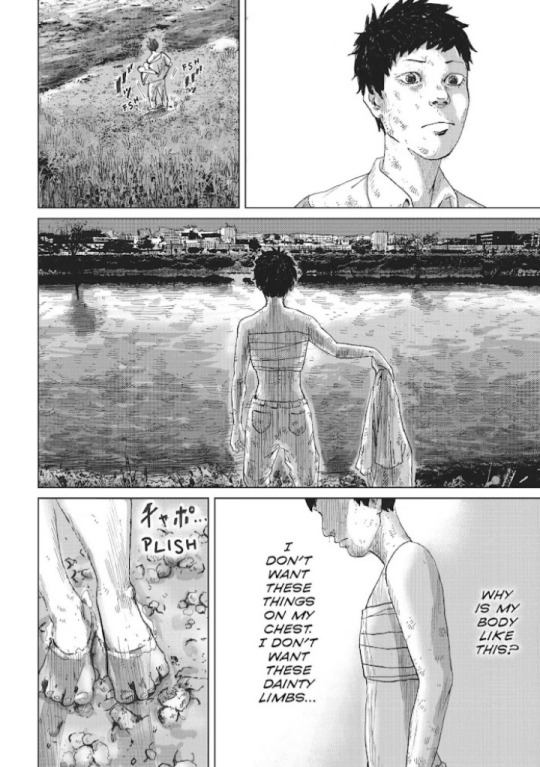
You can read the oneshot here, along with the rest of the winners of the 77th Tetsuya Chiba Award, completely free and legal, the only thing is that you have to know Japanese.
Despite being very short, it is a brilliant and interesting read, since in just one chapter you empathize with the situation of the protagonist. You see another perspective of life that a transgender person can lead, in this case because of the people around them. Since unlike in Boys Run the Riot, in Brigth Maki suffers more bullying at school for trying to be who he really is and it is terrible what he has to suffer, in addition to what he already carries with him. Although the way in which the protagonists feel about themselves is practically the same, both have hundreds of problems with their body and mind and the way in which the author narrates and draws it with so much reality that it makes for an unforgettable experience.
✰ Give support and love to the mangaka because I think he has a bright future and should not be missed.
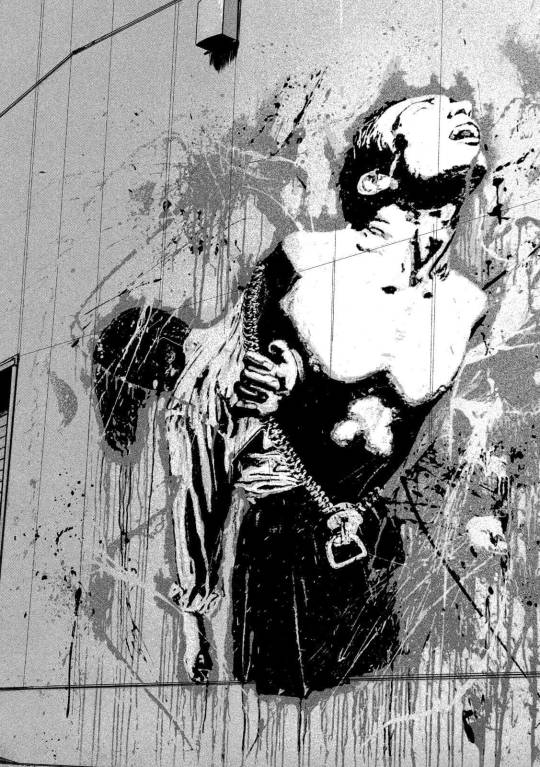
#boys run the riot#keito gaku#manga#bright#manga recommendation#seinen#lgbtq#trans#transgender#japan
16 notes
·
View notes
Text
VAGINAS AND JAPAN
What would happen if in a country like Japan, which has a festivity on phallic symbols (Kanamara Matsuri), a woman decides to exhibit art whose main concept is the vagina? Maybe you already know the answer or you can imagine it or maybe not, anyway this is what happened to Megumi Igarashi, a mangaka, artist, sculptor, feminist and activist, whose mission is to free Manko.
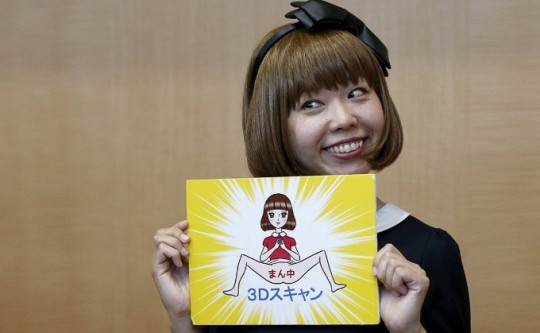
❀ MEGUMI IGARASHI
also known by her stage name Rokudenashiko, which means good for nothing, she was born in Shizuoka prefecture, Japan, on March 14, 1972. Unlike her sister, who was a perfect girl, Megumi wasn't a good student, wasn't even good at sports and wasn't a very formal girl either. Igarashi was also bullied, although she was so insensitive that didn't even realize she was being bullied. In 1990 she moved to Tokyo to study philosophy at Kokugakuin University. Shortly after graduating in 1994, she began to devote herself to manga, even winning an award from the Kodansha publishing house in 1998. Making manga made her less and less excited due to the competitiveness, but Igarashi found a refuge in experience reporting manga or of reality (taiken rupo).
In 2002 Megumi got married so she began to introduce her sexual experiences into her works. She created a manga about infidelities (something that happened in their marriage on both sides) and as the society in which she lives they only get angry with women and men are usually forgiven, but very few people in Japan managed it understand, so didn't have many sales. When discussing her sexual experiences, she realized that no female mangaka drew pussys. Megumi says that all the feminist artists' portraits of vaginas she had seen were sad and dark, showing how difficult it is to be a woman, but she wanted to show a more cheerful and colorful vision of the vagina and make it a pop icon, just like the penis in her country.
Igarashi had a complex about her own vagina, as she had never seen another one before and thought her might be abnormal. More or less there came the idea of starting to make molds and art on her vulva. At first the artist was a bit cautious, but when she started receiving a lot of negative reviews and comments like "you must be a really horny girl", she jumped at the idea of dedicating herself to making art with her manko (Japanese slang for refer to vagina).
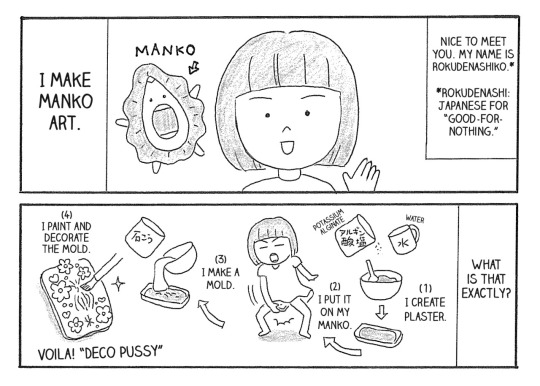
Megumi wants women to be able to talk about their pussy freely. "Most Japanese women have been brainwashed by their parents since they were children to think that their body, especially their vagina, is obscene. Boys are allowed to talk about the penis easily, even in public, but girls are not allowed. Parents forbid it. I think it leads women to think that our sexual organs are shameful and dirty. If women had more freedom to talk about their vagina, they could ask to use a condom, discuss sexual illnesses, their problems, etc. without being embarrassed, since people feel uncomfortable just hearing man(ko), but the same doesn't happen when they hear the word penis". Verbatim words from her blog 6d745.
❀ MANKO ART
As I said before the main theme of Rokudenashiko's art is her Manko. With that idea always being the center of her artistic concept, she has designed a lot of objects from necklaces, bracelets, to cell phone covers or even a remote-controlled robot.

Within her art collection in 2011 a series was born that she calls Deco-man, which is a play on words between decoration and manko. It basically consists of making molds of her vagina, decorating them and turning them into dioramas where her vagina is subtly camouflaged, like on that golf course or on the moon.
Her star work is a 2 meter Kayak called Pussy Boat. She even cost her freedom to carry it out.
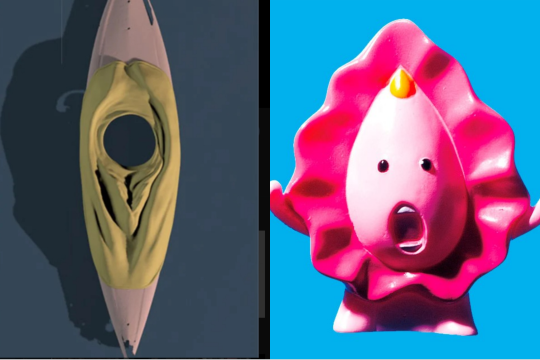
And how can we forget about Manko-chan, her beloved pop icon. A very striking figure with a funny (obviously) slightly anthropomorphic pussy shape that has a manga and a lot of merchandising such as: floats, clothes, figures of different colors, plushies, etc.
She also organizes workshops for women who are interested in learning more about their vagina. And they don't need to bring materials, since Megumi prepares everything.
❀ HOW DID SHE BECOME AN ALLEGED CRIMINAL?
In July 2014, the mangaka was arrested at her home and all her works were seized for violating Japanese law against obscenity. It all begins in 2013 when she wants to raise money through crowdfunding to carry out her star work, a Kayak (pussy boat) with which to take walks.
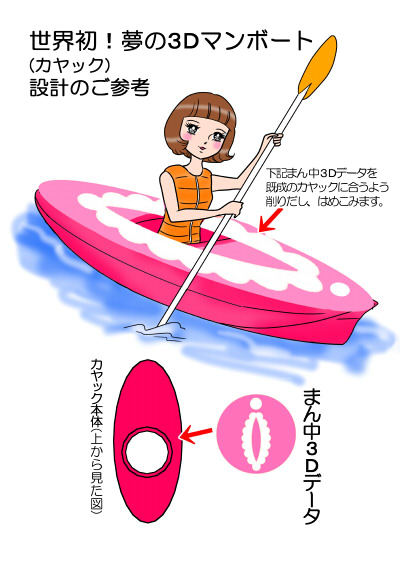
To all the people who contributed to the project, she sent the data of her vagina so that they could make the 3D project, but despite the fact that it was something artistic / for work, it violated the laws of obscenity, since in Japan it is forbidden to share your private parts. Obviously, Igarashi didn't think her detention was fair at all, since sharing data isn't obscene at all. "My vagina is no different from my legs or my arms," She claimed to the police. And of course it was not fair at all, since the police and the press, from a corrupt system, violated her rights and criminalized Megumi for an act that she didn't even initially have, political, vindictive and far from obscene intentions.
She spent 10 days in jail, during which time a total of 21,000 signatures were collected online to drop the charges against Megumi, and a week later she was released. But on December 3 of that same year, she was arrested again along with Minori Watanabe, a feminist writer and sex shop owner, for displaying an "obscene" object, a plaster replica of Pussy Boat, in Watanabe's store. (everything in a sex shop could be considered obscene, don't bother). On December 24, Igarashi was charged with "exhibition of obscenity", "electromagnetic obscenity recording" and "distribution of electromagnetic obscenity recording medium" and was finally released on bail on the 26th. In 2015 the trials took place to declare her guilty or not guilty.
A couple of curiosities that I have read on her Twitter is that of the 3 judges of the supreme court who handled her case over the years, all were men and in Japan there are also women in the supreme court and also that since she was bored between trial and trial looked for a part-time job.
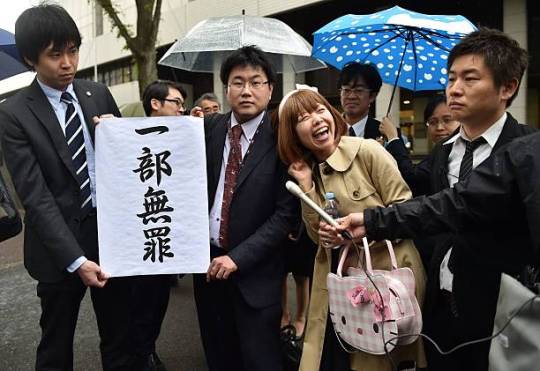
*a part is not guilty* Photograph: Kazuhiro Nogi
In 2016 she was found not guilty, because as the Kayak had such a striking decoration and color it was difficult to relate it to a pussy. She still had to pay a fine of ¥400,000 (€2,800 / $3,100) for having shared her vagina data and everything that the police had seized from her was returned and Megumi was finally able to navigate her kayak.

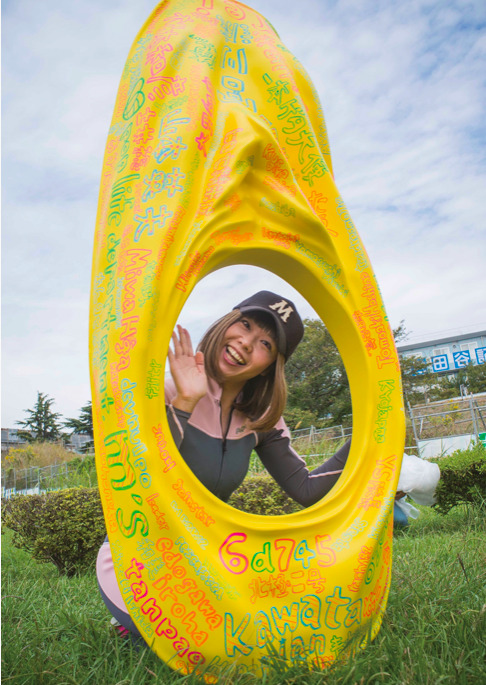
Had she been found guilty, she would have faced 2 years in prison and a fine of ¥2.5 million ($19,400/€18,000), a disproportionate punishment considering what she did. In 2021 Megumi Igarashi could already breathe without worry since she had her last trial (she could still have gone to jail), she paid the fine and is finally free. But not everything was a punishment for Igarashi, thanks to the fact that her case went viral and reached many parts of the world, Mike Scott, singer and guitarist of The Waterboys, became interested in her, he is currently her husband and they both had a son. So for Megumi being arrested became a kind of Tinder.
❀ WHAT IS OBSCENITY? 2016
French edition/ spanish edition
Megumi Igarashi narrates in this manga a bit of her life, everything that led her to make art with her vagina, the days she was in prison and the injustices and absurd situations she has experienced.
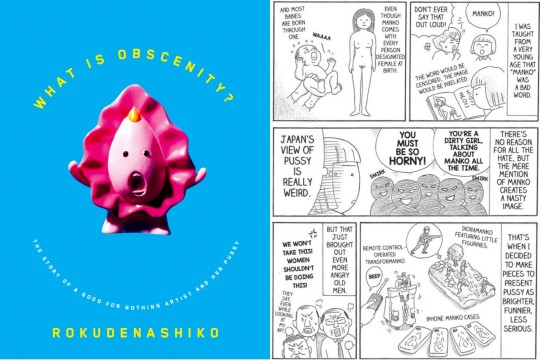
Obscenity is full of very interesting reflections on the female body and why it is considered obscene. Spoiler alert: because the man only sees them as a sexual object, but Rokudenashiko proves that it is just another body part. "They can be erotic, but they can also be funny, empowering or adorable."
The manga It a strong criticism of Japanese society, although it can also be applied to many others (I think the whole world shares taboos towards the vagina, maybe not in the same way, but in essence). This criticizes hypocrisy, since of course penises and vaginas are not the same, but not only in form and function but also because of how they are treated/represented in society. Megumi questions the reason for this, because the vagina is disgusting and is never portrayed, why it is talked about with disgust or even it seems as if it is forbidden to talk about it because it generates rejection and yet the same thing doesn't happen with the penis.
A couple of details that catch my attention is how the "Good for nothing" hides her anger with humor. In fact, humor is also used to cover up situations of criticism and injustice and thereby demonstrate the strength of the author, she applied the best way to laugh rather than cry. The other detail is how she never gives a conclusion. This manga that borders on the documentary, doesn't have absolute answers, only guidelines through personal experiences so that you can draw your own conclusions and be more or less on her side. She doesn't try to force you to have her same ideals.
What is Obscenity? is an excellent choice if you want to eliminate the taboos that your society has put in your head about the pussy, see the vagina with different eyes, normalize it, appreciate it much more and turn it into something pop.
Just say thank you Megumi Igarashi and FREE MANKO! <3

#feminist#feminism#Megumi igarashi#Rokudenashiko#free manko#3d art#japan#manga#manga recommendation#I love this woman so much
1K notes
·
View notes
Text
KANAKO INUKI
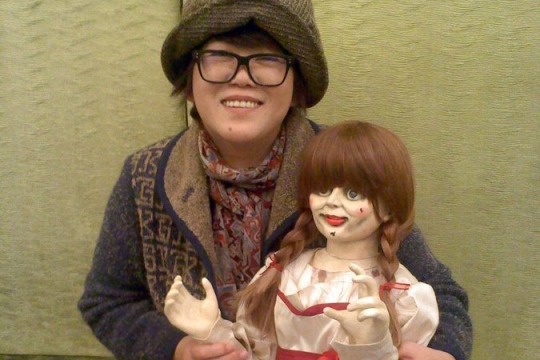
Or The Queen of Horror Manga, is the most outstanding female mangaka within shōjo terror. Her works are characterized by terror, folk traditions and an ironic and moralistic humor. Some of her most notable manga are Presents and School Zone.
Kanako was born on December 28, 1958 on the island of Hokkaido, although her family soon moved to Saitama prefecture.
She spent her entire childhood surrounded by manga, since her mother was a big fan of the great mangaka Osamu Tezuka and also because there was a bookstore specializing in manga near her house.
Inuki investigated various genres, but the one she liked to consume the most was horror. The mangakas that she liked the most and she was her main referents are: Kazuo Umezu, Moto Hagio, Mitsuteru Yokoyama, Hideshi Hino and the great Osamu Tezuka.
(Until the horror boom of the late 80s/early 90s, this genre was kind of "cancelled" because it was said to have a negative impact on children).
Little by little Kanako asked her parents to go see scary movies (they were "suitable" for children's consumption) and they didn't refuse, but this type of movies and manga were not a good influence for Kanako. She began to have nightmares, to question herself to death... she had a fever, couldn't sleep at night and sometimes had to miss class (to this day she continues to have traumas with a mummy). Solution: Ban her from watching those movies.
During her adolescence, Kanako put aside the horror genre to read romance manga, basically like the girls around her.
The years went by and finally she graduated from university with very good grades, got married, joined the world of work and had her first child. But she still loved her first love, the horror genre.
Asahi Sonorama began to publish what would be the first magazine specialized in the Horror genre, just shortly after Kanako had her first child. This made Inuki get the manga bug again. When she was a child, one of her dreams was to be a mangaka, but her mother forbade it for obvious reasons (mangaka are one of the social groups in Japan that have the most difficulty renting/buying a house, for example).
So she started to make doujinshi of the manga that were published in said magazine. One of the doujinshis that she had created was a finalist in a contest, this made the Kodansha publishing house notice Kanako and made her debut in 1987 as a mangaka in Sōjo Friend magazine with her first official manga, Orosuban. Kodansha, a year later, began publishing its first exclusive horror magazine (with a shōjo demographic), Suspense & Horror.

Inuki always occupied the covers and the magazine was a success and had more and more consumers, so the other publishers soon launched their own horror magazines (whose demographic was still shōjo, in the vast majority) and Kanako collaborated in all of them.

Horror House/ Horror M
Kanako Inuki during the 10 years that the boom of the genre that she headed lasted was named the Queen of Horror. She worked for 5 or 7 magazines every month, whether it was doing oneshots, double page color drawings, columns, etc. She was always very busy, so she developed a somewhat vampiric life habit: sleeping during the day and working at night, she went to bed at 6 a.m.
Inuki was inspired by two well-known mangaka in this genre, Kazuo Umezu and Hideshi Hino, to develop his own drawing style. The fact that it is inspired does not mean that it is copied and Kanako, the truth, has a very own and easily recognizable style. Her main characters with big round eyes have a very innocent appearance, which makes them have a greater impact in gore scenes. Inuki has a very unique style within the world of manga.
Kanako Inuki is currently a visiting professor at the Osaka University of the Arts and a professor at the Tokyo University of the Arts. She continues to dedicate herself to manga, but in a more relaxed way.
ʚĭɞ PRESENTS 1993-1998

- genre: horror
- demographic: shōjo
Kanako Inuki's manga are characterized by being short stories and this one is no exception. The most important detail is that all these stories are linked to each other or have a common point, Kurumi, the protagonist. Presents introduces us to an innocent-looking girl who can't have a birthday and therefore can't age. Kurumi has a peculiar sense of justice and as she wanders the world she will be handing out suspicious gifts and dispensing justice. Another of the main points of the story is the gifts that are denied to this girl, this shows us another very peculiar side of the protagonist, since she has never actually opened a gift. But let's not forget that there are many stories and in one of them nothing more and nothing less than Santa Claus appears, but a slightly different Santa Claus, who punishes those who in the future will be bad adults.
Never accept a gift from Kurumi.
ʚĭɞ SCHOOL ZONE 1996-1999

-genre: horror, supernatural
We continue with short stories linked together. In this case School Zone doesn't have a protagonist who is the cause of the misfortunes, what all these stories have in common take place in a school full of spirits and there is always a leader who is in charge of "protecting" his classmates. There are three elements that are also widely used: the Kokkuri-san, a Japanese game very similar to the Ouija board, a huge mirror and a spirit, Nanka, who appears from the first chapter.
In an interview Kanako said that mirrors have a mysterious, psychic vibe to her. That if you get close enough the background changes completely and that if we could enter them we would not only see our physique reflected but also our personality.
ʚĭɞ KUCHISAKE ONNA DENSETSU 1995-1997

- genre: horror
Once again we have a collection of horror stories, but in this case they have nothing to do with each other. The main story and the one that gives title to the manga is that of Kuchisake Onna, possibly the most deeply into Japanese culture will know her. Kuchisake Onna is a beautiful woman whose husband, a samurai, smashed her face when he found out that she was unfaithful to him. Now this youkai haunts a school looking for girls.
The other stories that appear are: Snail with no shell, Makeup and The Science Room's Baby. These three have nothing to do with Japanese folklore, they are Inuki's own invention. The only thing they have in common is that they all have high school girls as protagonists.

- Snail with no shell/ Makeup
ʚĭɞ OTHER MANGAS

— BUKITA-KUN 1988-1998
- genre: horror, supernatural, romance
- demographic: shōjo
Bukita is a boy who wants to find love, which is not easy because he is a heartless zombie, but it is even less easy for the girls he obsesses over. This character is inspired by Freddie, the protagonist of The Collector, an introverted boy who becomes obsessed with a girl to the point of kidnapping her. This movie had 3 Oscar nominations, but Bukita has the made in Inuki brand and two sequels.
— KANAERARETA NEGAI 1991
- genre: horror
- demographic: shōjo
Each chapter is a different story, but they all follow the same structure: girls who want to catch a demon in order to make a wish. The premise is simple, but making deals with a demon is never a good idea and it goes pretty deep as it shows how selfish people are. It is a manga that divides kanako fans, since it is a bit out of what we are used to seeing.

— KAGAMI HANASHI 2021
Kagami is a boy obsessed with mirrors and everything that is reflected in them. Are you what the mirror really reflects?
This is Kanako Inuki's new manga and she has been working on it since last year. You can read the first chapter for free on palcy (and if you know Japanese).

Kanako Inuki has managed to be crowned queen and have great popularity in horror, a genre dominated by men, and not only that, she also dominated the horror boom and magazine covers for an entire decade. Just say Long live the Queen.
#kanako inuki#presents#school zone#horror#manga#manga recommendation#shoujo#horror shojo#horror manga#japan
41 notes
·
View notes
Text
GRASS
It is a non-fiction manhwa/graphic novel about comfort women, written and drawn by Keum Suk Gendry Kim. It is about one of the darkest chapters and one of the greatest war crimes of the 20th century. Grass is as heartbreaking as it is poetic, it is a walk through such a cruel scenario, such as war, seen from the perspective of a girl, with a name and a face since it is the true story of Lee Ok-Sun.
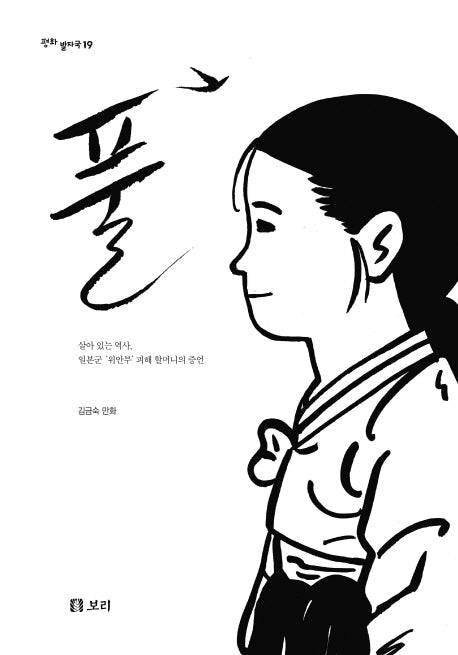
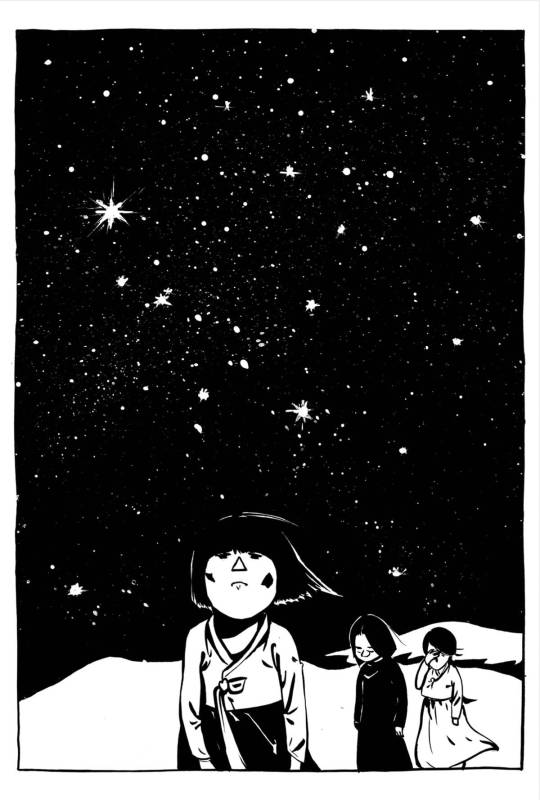
— genre: historical drama
— English/ spanish/ french/ polish/ Italian
— LEE OK-SUN
She is one of the few survivors of the comfort women who is still alive and the protagonist and narrator of the story along with the author. Grass covers Lee Ok-Sun's life from its very beginnings, when she was a girl from a very poor Korean family who only wanted to study, but they wouldn't let her because she was a woman and had to work at home and take care of her little sister, who eventually it had to be sold because they couldn't keep her. No adoptive family wanted her, so she was rotated from one house to another, until in 1942 the Japanese imperial army laid hands on her and took her to a Chinese air base along with other girls, that's where her real hell began... In 1945 the war came to an end and "finished" her torture. During those 3 years Lee felt that her spirit had died.
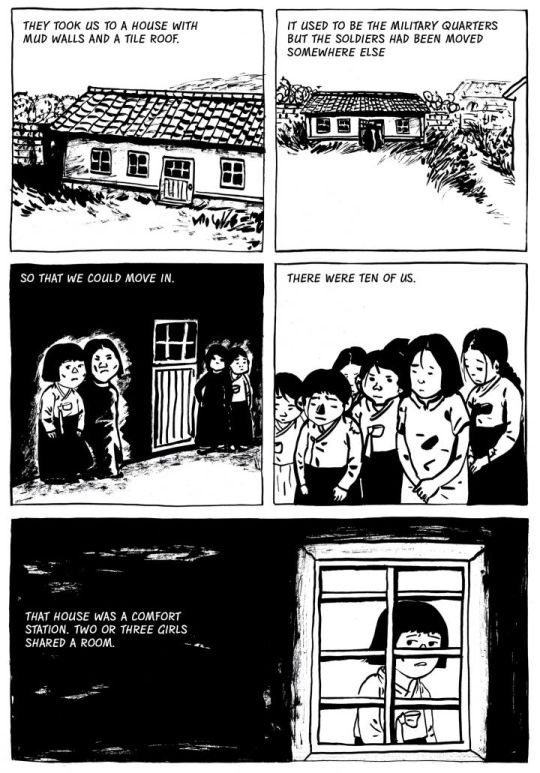
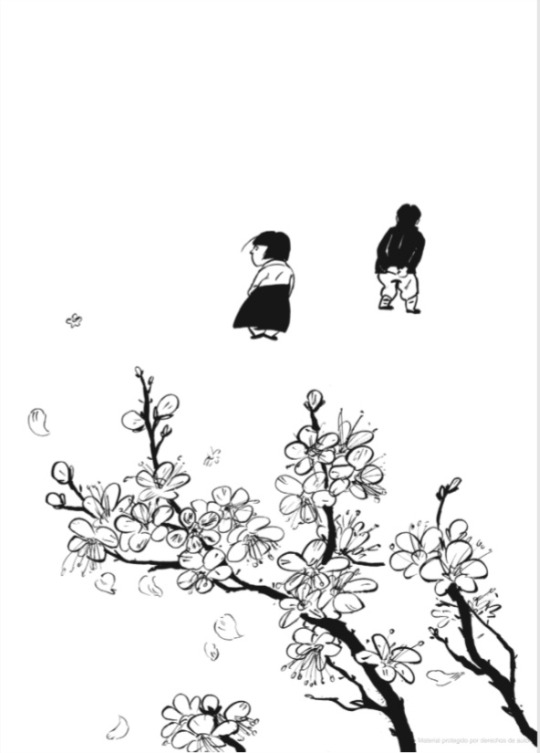
Lee Ok-Sun said that in a weekend she could be raped by up to 40 men. Who wants that? NO ONE.
Sold as a child, kidnapped at 15 and raped and enslaved at 16, this is how the protagonist's childhood and adolescence could be summed up in one sentence.
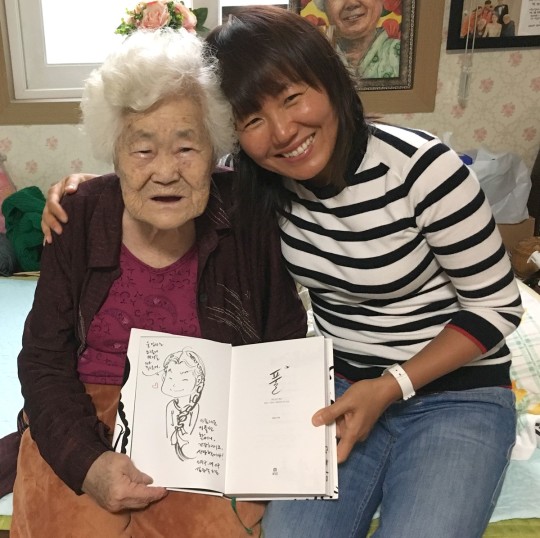
Lee Ok-Sun together with Keum Suk Gendry Kim, the author.
Keum Suk Gendry Kim assured that while interviewing Lee she did not stop joking and that she was a very optimistic woman with a great sense of humor (maybe i'm crying right now) since she has suffered so much now Lee enjoys the present, because during the time she was in the comfort stations the only thing she did was survive, and surviving is not the same as living.
Lee Ok-Sun told the author that during the time she was in that hell, she missed her hometown very much, the mountains, the rivers, etc. That gave Keum the idea of substituting scenes of violence for scenes of nature and the very title "Grass" is a metaphor. In Korea, due to the influence of Confucianism, women are described as flowers, although in this case the soldiers treated them as grass. They were trampled, uprooted... but like grass they grow back.
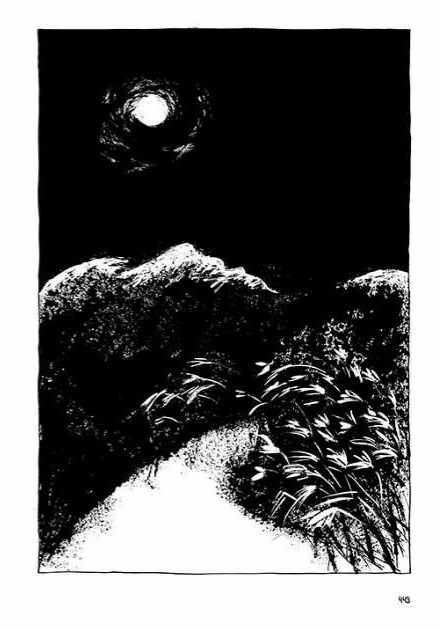
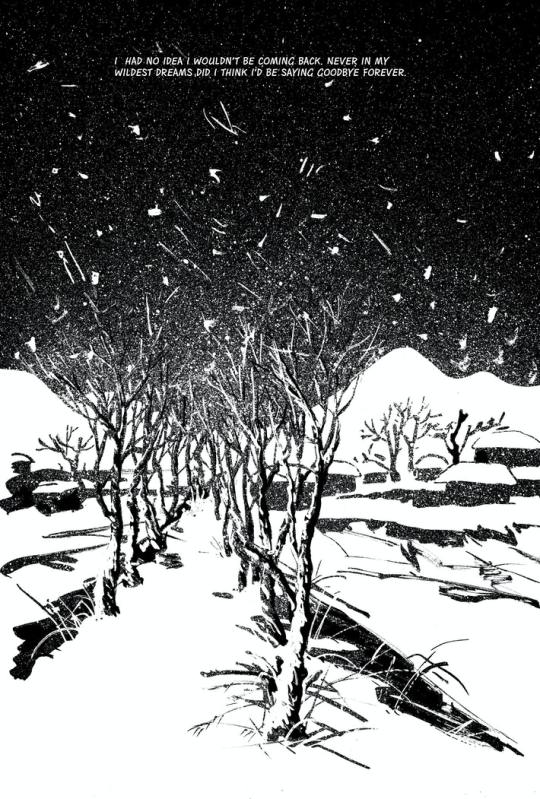
PRIZES
Grass is a manhwa that has managed to reach the expectations of the critics, I have hardly been able to find any negatives and obviously that would be well rewarded. Media such as The New York Times, Los Angeles Times, The Guardian or Library Journal have named it the comic of the year, BUT it does not stop there, it has won multiple awards and from different countries. In 2020 won the Krause Essay Prize and in 2019 won the Prix Bulles d'Humanité. But it's not done with those either: the Cartoonist Studio Award, Harvey Award, Big Other Book Award and Yalsa Book Award are some of the awards Grass has won too. And I better not mention the ones it's been nominated for.
— COMFORT WOMEN
Comfort women is a euphemism used by Japanese soldiers during World War II to refer to their sex slaves.
They were women from different countries in Asia, such as the Philippines, Thailand, Vietnam, some territories occupied by the Japanese Empire, some even from Europe or Australia, but the vast majority were from Korea or China. Well "women", many were between 13 and 18 and others had not even started menstruating. In some cases they were kidnapped by force, in others they made promises that they would go to work in factories or restaurants and were even promised to be able to study, some were raped and then made sexual slaves and others were threatened at gunpoint. But all of them, if they did not die before, were taken to prisons known as "comfort stations". According to the testimony of a Japanese soldier, Yasuki Kaneko, the women screamed, but they did not care if they lived or died, since they were the emperor's soldiers and whether in military brothels or in the villages, they raped without restraint.
At the end of the war, the surviving women were treated as social outcasts. "Virginity" was something of great value at that time and understanding the patriarchal context, those women who needed help were simply ignored by society and even by their own families, as happened to Lee Ok-Sun for example.
To this day, the total number of victims in this horrible war crime of the Empire of Japan is still being discussed. According to a Japanese historian there were a total of 20,000 slaves, and according to some extreme right-wing politicians none of these women were forced, they were all volunteers and well the victims are making it up, because there were no slaves. But according to a Chinese author there were a total of 410,000 women. A total of between 200,000 and 400,000 women is currently discussed.
A large majority committed suicide and many were left sterile due to physical damage and sexual diseases. Fewer than 10 comfort women are currently alive.
In 1991 a Korean woman, the first, dared to tell what had happened to her. Thanks to this lady, who took the first step, little by little women from different countries, who were sexual slaves of the Japanese imperial soldiers, dared to tell about the hell they had lived through, such as a woman from Taiwan. This woman said that thanks to this Korean lady she lost her fear of being rejected for what happened to her and that the stone that was stuck in her heart became smaller.
WEDNESDAY DEMONSTRATION
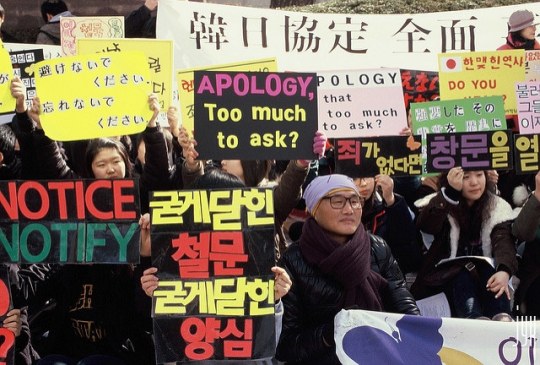
Photo Credit: Joonyoung Kim
Surviving comfort women, human rights and women's rights groups, religious groups, activists and peace activists even from other countries, gather every Wednesday in front of the Japanese embassy in Seoul, South Korea to vindicate justice to Japan for its inhuman acts to "comfort women" (sex slaves), during the 2nd world war.
The first demonstration took place on January 8, 1992, during the visit of the Japanese Prime Minister, Kiichi Miyazawa. After the success of this, it continued to be held every Wednesday, except holidays, to continue pressuring the Japanese who continue without giving in or fully apologizing.
In 2002, the Wednesday Demonstration entered the Guinness Book of Records for the longest demonstration in history on the same subject: Human rights.
And in 2011 to celebrate the thousandth protest, a statue of a comfort woman was erected right in front of the Japanese embassy to make them repent for what they did, but all Japan has done is ask that it be removed, which Korea is totally against it and isn't going to do it.
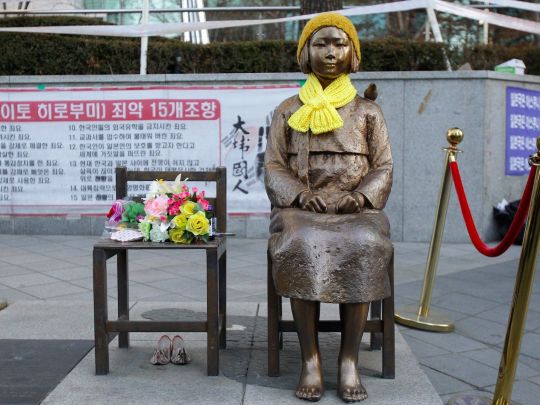
Finally, the South Korean and Japanese governments reached an agreement in 2015 to consider the issue settled. A South Korean court sentenced Japan to compensate 12 of those women with €75,000 ($81,670). When the sentence came out, only five of them survived.
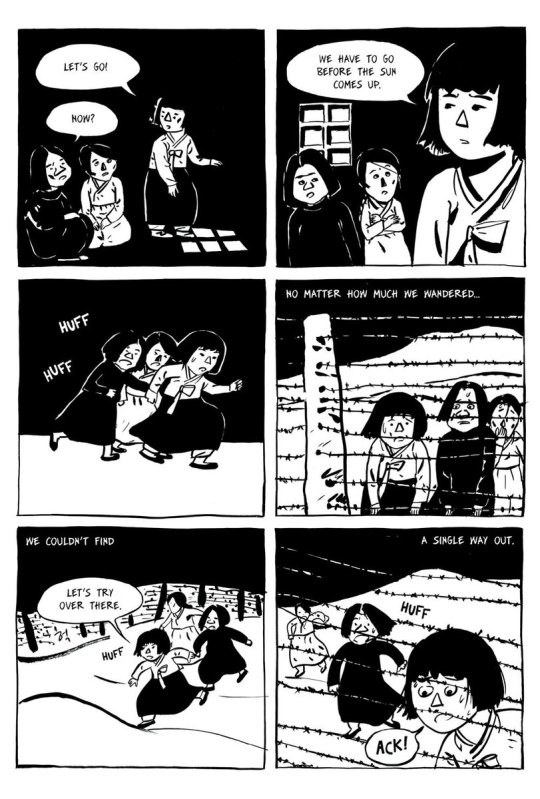
Grass is a very hard manhwa to read. It is very shocking and heartbreaking, but with a lot of sensitivity and very optimistic moments. there are moments of great anger and tension in which you will have a strong knot in your stomach and others in which there will not be enough tissues. Grass narrates a reality that hundreds of thousands of women lived without showing hatred to the Japanese. It is a strong anti-war message and an unforgettable experience.
#Grass#manhwa#graphic novel#keum suk gendry kim#Lee Ok-Sun#comfort women#japan#south korea#second world war#Wednesday Demonstration#manga recommendation#history
68 notes
·
View notes
Text
AKANE TORIKAI

is a mangaka and feminist known for her manga Sensei no Shiroi Uso and Saturn Return, works that represent the reality that girls live, their fears and frustrations. She draws and writes by and for women.
Akane Torikai was born on August 13, 1981 in a prefecture of Osaka. She had a somewhat complicated adolescence and found solace in the manga she read. Akane actually started drawing by copying the style of 90's shōjo manga.
While studying art at Kyoto University, she discovered mangaka and feminist Kyōko Okazaki in a fashion magazine. She was a great source of inspiration for Akane who after reading her manga felt that she liberated women.
In 2004 Torikai debuted as a mangaka, although it was not until 2010 that she published her first serialized manga, Ohayou Okaeri, in seinen Morning Two magazine. During that time, what she devoted himself to the most was writing and drawing short stories.
In 2018 Akane publishes an essay/diary, where for 3 months she tells us what her life is like. It mainly deals with the dilemmas of being a woman in Japan who is dedicated to manga and the difficulties of raising her child from her previous marriage together with her new husband. This character is never named, but that same year the famous mangaka Inio Asano announced that he had married Akane Torikai. In the summer of 2022 they announced their divorce
Since she left Osaka the mangaka has moved more than 10 times and according to Torikai looking for a house is like finding a good lover (difficult I guess). The first time she moved was when Torikai started university studies, although when she graduated she returned home. But when Akane came back, her grandfather was there and he didn't make her feel very comfortable, so she quickly decided to move to the outskirts of Tokyo and that would be where she would start her career as a mangaka.
Many of the furniture and designs in her houses are hers, since her father was a furniture craftsman and inherited that hobby from him. She built a table for one of her many homes and she likes to restore and bring old and forgotten furniture to life.

Bathroom design by her, although she no longer lives there.
NIGHT ROUTINE
♡ 19:00 - this hour is dedicated to her three pets, her dog Moog-kun, her turtle and Asano's cat, Guru-chan.
♡ 20:00 - Search for inspiration/motivation to draw such as playing the piano, social media or spending more time with her three little angels.
♡ 24:00 - draw with the iPad. Some of her drawings are published in cultural magazines like Weekly SPA!


♡ 1:00 - skincare routine
♡ 2:30 - a little late, but it's her dinner time. She loves Korean ramen and it's almost always her dinner.
♡ 3:00 - Bedtime

Although in her beginnings in the manga Akane sought validation mainly from men, since the manga market was full of them and both their words and their "culture" were used. Torikai gradually realized and wanted to destroy those "standards" to be able to dedicate himself only to women (although any, more or less adult person, can read her mangas) and without being afraid of what they will say, criticism or not being popular. In her realistic mangas, she wants to capture the fears and insecurities, especially of girls/women, so that they don't feel alone and she can help them, as with topics like sex and rape, a fairly taboo subject. Akane never hesitates when it comes to speaking in her interviews and in one of them she highlighted that she is desperate to make the effort to understand those who are against feminism.
♡ SENSEI NO SHIROI USO 2013-2017
- Genre: drama
- demographic: seinen
- french edition english spanish
The protagonist, Misuzu Hara, is a 24-year-old teacher. She lived a traumatic experience 4 years before, she was raped by the current fiancé of her best friend and she has convinced herself that this happened to her because of being a woman. Hara, despite her students' contempt for her, only wants to help them in the complicated stage that is adolescence, and all this while she lives with her trauma and her life does not stop reeling.
Sensei no Shiroi Uso deals with issues such as sexist violence, social inequality, misogyny, and how it destroys women and men, or the silence after a horrible act due to being afraid and not knowing what the best option is.

The manga is full of scenes and feelings that unfortunately many women will understand.
In 2018 it was nominated for the Osamu Tezuka Cultural Award.
♡ SATURN RETURN 2019-
- genre: drama psicológico
- demographic: seinen
French Italian
Ritsuko Kaji, in addition to the protagonist, is a housewife and writer. The first novel Kaji published was a success and she was treated like a genius, but now the protagonist is going through a block and she is not able to write a single sentence. To this is added the pressure of her husband so that she has her child and her monotonous life. One day in a dream, Kaji's childhood friend, Aoi, appears to her and asks her a question that leaves the protagonist thinking "your life... is that really it?". The next day she receives the news that her friend has committed suicide. Together with her colleague, she decides to go investigate what happened.
In Saturn Return depression is a very recurring theme and is treated as it should be, normalizing it, but without romanticizing it. It is also a criticism of the social pressure that women have, especially in Japan, to abandon their work to dedicate themselves to the house and the children.

All her works are full of personal experiences.
♡ MANDARIN GYPSY CAT NO ROUJOU 2017-2018
- genre: drama, sci-fi
- demographic: josei
- french
The story takes place somewhere in Asia in a somewhat dystopian future. This place is a matriarchal dictatorship where there are no wars and people live in peace, but there are two problems: the shortage of men and the large number of sterile people. This means that those people who are fertile are exploited for reproductive purposes, so many end up escaping to a kind of suburbs, that's where Sanada, the protagonist, resides. This girl keeps a secret that can cause many changes in people.

Mandarin Gypsy Cat no Roujou is a manga that is far from what Akane is used to doing and even so the result is sublime. It's full of strong, interesting and endearing female characters just looking for a place in a horrible world.
♡ OTHER MANGAS
— SANS PRÉAMBULE (ZENRYAKU, ZENSHIN NO KIMI) 2022
- genre: slice of life
- demographic: seinen
- french
It is a compilation manga of short stories, but all of them have something in common. They are all teenage girls in high school questioning life, the future, work, love, etc... in short, having existential crises.
The manga is entirely in pencil, without inking, except for the last chapter.
— YOU' VE GOTTA LOVE SONG 2015
- genre: slice of life
- demographic: josei
- french
Another compilation manga, but this time the stories are not connected. A housewife tired of her life or a runaway teenage girl, are some of the 4 protagonists of this manga. The only thing these women have in common is their existentialist/philosophical questions about life.

Akane Torikai deserves much more recognition.
#akane torikai#manga#mangaka#digital artist#feminism#feminist#manga recommendation#seinen#inio asano#sensei no Shiroi uso#saturn return#josei
91 notes
·
View notes
Text
ATTACK NO. 1
This manga by Chikako Urano (1946), one of the pioneering women in the mangaka profession, is one of the first (if not the first) shōjo manga for women's sports and is also focused on volleyball. It was published in the famous shōjo magazine Margaret between 1968 and 1970. Attack No. 1 has numerous adaptations such as the first female shōjo spokon (sports genre) anime, it has 4 films, several reprints and a sequel to the manga, a live action drama of 11 chapters and spinoffs.
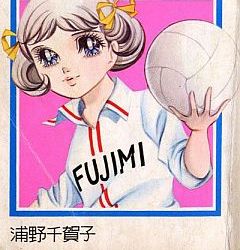

- Genre: Drama, Romance, School, Spokon
ORIENTAL WITCHES
After the Pacific War or the Great East Asian War (1937-1945) and World War II, the United States occupied Japan for 7 years. With so many prohibitions and censorship that they imposed, like in martial arts for example, the only thing where the Japanese could discharge all their energy was in sports.
One of the ways to recover his pride was based on sports victories and especially if they were against the USA even if they were agreed as in wrestling.
WOMEN'S VOLLEYBALL TEAM
In 1953, the current Unitika company decided to establish a women's volleyball team, Nichibo Kaizuka, in one of its factories in Kaizuka, Osaka.
Hirofumi Daimatsu, a former military lieutenant and veteran of the Imphal war, was the coach of this volleyball team for some very intense years. He was known as "the Ogre" for his unorthodox training methods. The girls started training at 4:30 p.m, when they left their jobs in factories, finished their training at midnight and only had a few days off at the end of the year. He was so cruel that some girls ended up vomiting blood and when they couldn't take it anymore he invited them to leave. The Ogre was so tough because he had set himself the goal of making his team the best in the country and then in the world.
In about two years they were already the best in Japan and after achieving 24 wins in a row against national teams, the European media gave them the title of Oriental Witches.
In 1962 they won their first World Cup.
OLYMPIC GAMES TOKYO 1964
In 1964 for the first time volleyball was introduced as a sport in the Olympics. It was a great opportunity for the Japanese to regain their pride as a nation and all that stuff. So the Oriental Witches had a huge burden on their shoulders, in fact one of them said that if they lost they had to leave the country. The Japanese judo team had lost in their modality, which put much more pressure on the girls.
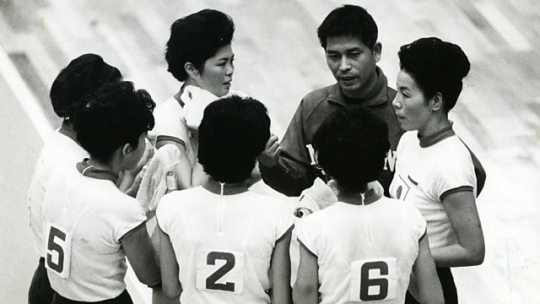
They played the final against the Russians, who were much taller and stronger than them. The Oriental Witches started playing quite well and had a big advantage, although little by little the Russians were gaining points. The horn sounded and finally the victory went to the Japanese. In 1964 the first women's volleyball Olympic gold went to Japan.
The Oriental Witches went from factory workers to national heroines.




The Oriental Witches were the inspiration for many manga/ anime, the most important...
ATTACK NO. 1 (anime 1969-1971)
The passion of the protagonist, Kazue Ayuhara, is volleyball and she dreams of becoming the best player in her high school, then in Japan and finally in the world. She is transferred to Fujimi Academy, due to her health condition. Once there, she will join the volleyball team, something that not everyone likes because she hangs out with the "delinquent girls" of the institute. While a lot of problems arise for the protagonist, she will have to deal with the death of a very important person, her rivals and with a trainer who uses harsh and cruel training methods "like the Spartans". Little by little, Kazue realizes that being the best in the world is something really difficult and very stressful.
Some critics have highlighted that the protagonist is psychologically independent. And from my point of view she kicks the patriarchy in the ... as it shows that she doesn't need a man to be complete, she loves volleyball and this will always come first, and what she looks for in a guy is more of a partner than her priority.

Friendship/enmity, rivalries, anxiety, female characters with good development, slightly violent situations and drama, a lot of drama, are some elements that made this shōjo anime stand out in an era where shōnen and science fiction dominated.
Due to its popularity, during the 90s it began to be broadcast throughout the rest of the world, although not as Attack No. 1. In Spain it was renamed "La Panda de Julia" (Julia's Gang), in France it was "Les Attaquantes" and in Germany "Mila Superstar". It served as an inspiration for girls from all over the world who now wanted to play volleyball, like the Italian Francesca Piccini, and also for mangaka like Jun Makimura and Shizuo Koizumi, who together created Attacker You! (1984).
It was very, very popular, so that in 2006 in the Japanase Favorite TV Anime voting it was ranked number 9.

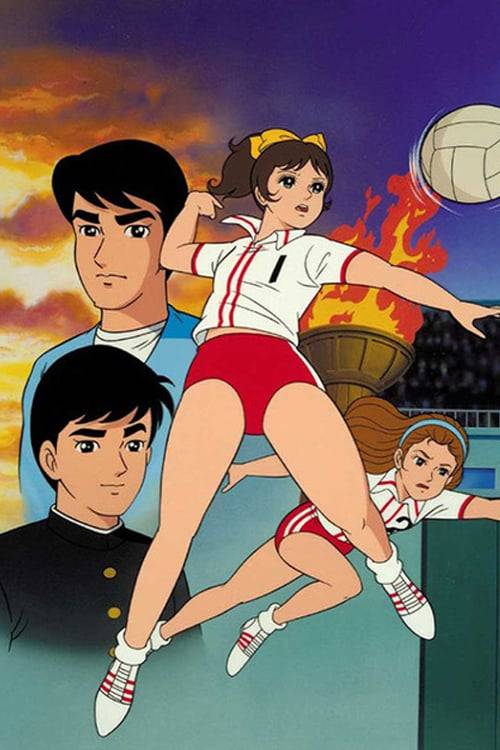
#manga#anime#attack no. 1#Kozue Ayuhara#classic shoujo#volleyball#classic manga#spokon#anime sports#oriental witches#history#japan#feminism
38 notes
·
View notes
Text
KYŌKO OKAZAKI
Mangaka and feminist considered the mother of the Josei (demographic of manga aimed at an adult female audience 18+)
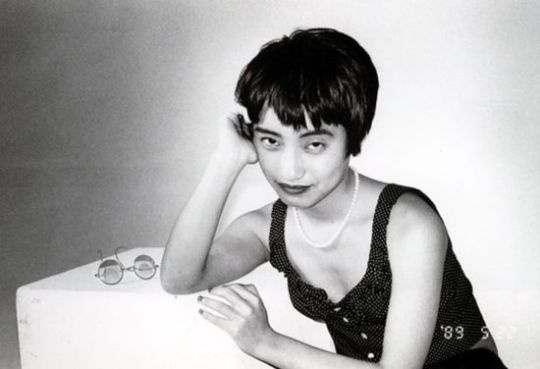
Kyōko was born on December 13, 1963 in Shimokitazawa, Tokyo. When she was little, her father had a hairdressing salon and a total of 15 people lived in her house, including her uncles, cousins and her father's apprentices. Despite being so many people in a house, Okazaki said that everything was quite calm and that she had a good childhood, but that she never felt comfortable.
While studying art at Atomi Junior College (a Japanese college for women only) Okazaki debuted in Cartoon Burikko, an erotic manga magazine geared towards men. Although officially her first manga was Virgin (1985) published in Byakuyashobo magazine.
Kyōko was the most relevant author of Josei between the 80s and 90s, the latter being her golden decade. Her works with a minimalist but profound style deal with delicate and very taboo subjects such as prostitution, depression or drug addiction (without romanticizing any of these) and are also full of elements such as sex or fashion and beauty and the problems that it brings the obsession with these. In addition to the adult plots, another thing that separates it from shōjo is her female characters. Her mangas are full of unconventional girls, they are bold and their concerns are those of modern women and they don't think so much about getting married and starting a family, they leave aside the innocence of shōjo girls.
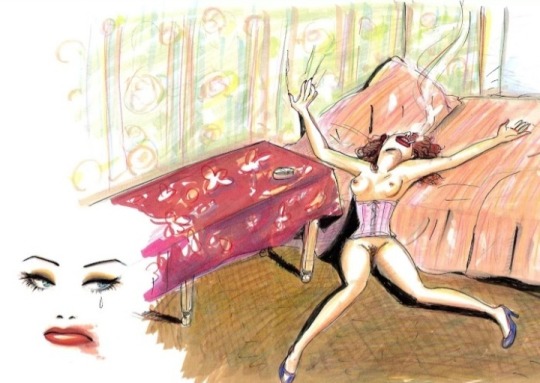
In 1996, at the age of 33, Okazaki was hit by a drunk driver, leaving her unconscious and unable to breathe on her own. She had to relearn how to speak and is currently in rehab, in 2014 she was seen in a wheelchair. Due to all the sequels Okazaki was forced to leave the manga.
Her works are a reflection of the society of the 80s and 90s. A cynical, selfish and capitalist society, which projects the vast majority of problems and insecurities onto women, making us compete with each other (well, it is also a reflection of the present).
♡ HELTER SKELTER 1995-1996
- genres: psychological horror
- Awards: Osamu Tezuka Cultural Prize 2004, and Excellence Award from the Japan Media Arts Festival 2004.
- english | spanish
It is a criticism of the toxic society that makes women have to worry much more about their appearance and what others say.

Liliko (Ririko) is an increasingly popular model. She lives and depends on her physical image, which makes her obsession with her youth and her beauty lead her to make a series of not very good decisions. Illegal plastic surgeries, drugs, lack of sleep, her rivalry with other models and the people around her gradually destroy the protagonist.
— It has a live action from 2012.
♡ PINK 1989
- genre: slice of life
- english | spanish
It is a critique of capitalism that makes us believe that we have to fill our pockets with material goods. It deals with serious topics with a dash of humor, but it's still a drama. It also represents the relationships between women from the same family nucleus.
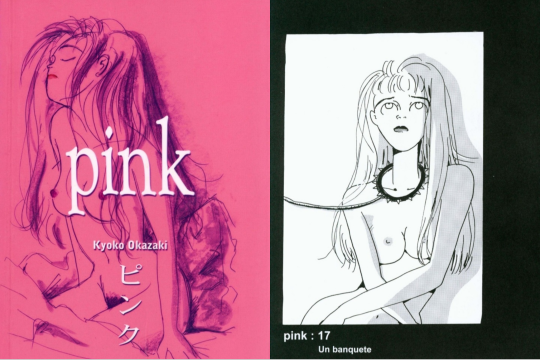
Yumiko is the main protagonist, she is presented as a carefree girl who is unable to see beyond her nose. She is a secretary by day and a prostitute by night, since her secretary's salary is not enough to feed her peculiar pet, a crocodile. She always listens to her co-workers complain about money and they wait for a prince charming to save them, but Yumiko thinks that with a series of tricks in her life they wouldn't have to worry about it. On the other hand we have Haruo, a university student who puts the masculine gaze on history, has sex with Yumiko's stepmother for money, is much more serious and wants to be a writer although the only readers of his are Yumiko and her stepsister.
It contains an epilogue that is a brief reflection that Okazaki makes of love, work and prostitution.
♡ RIVER'S EDGE 1993
- Genre: drama, slice of life
It represents with a more serious and objective look the problems of adolescents and how horrible adolescence can be for many people. Shows us bullying, sex, queer characters, double-edged relationships and eating disorders for what they are.

Haruma is the protagonist and is the girlfriend of the school bully, although she is less and less clear about what she saw in him. She usually defends Yamada, a gay boy who has a girlfriend just for show, from the harassment of his partner. Yamada confesses to Haruma that he has found a body and that she should tell the police, but he is unable to do. The river's edge hides many secrets.
— It has a live action from 2018 winner of the Japanese Academy Award for New Value of the Year.
♡ OTHERS MANGAS
— CHIWAWA-CHAN 1996
Chiwawa is a popular girl, but one day she turns up dead. Her friends gather to commemorate her and realize that they don't know anything about her, not even her real name or what kind of people she hung out with.
It has a live action from 2019
— TOKYO GIRLS BRAVO 1993
The protagonist has grown up in a family full of problems. When she decides to move to Tokyo she falls in love with its music and nightlife. She finally makes a big change that surprises even the most modern people out there.

Kyōko is heir to the change made by the women of the Year 24 Group in the manga, but now it is her turn to give voice to women whose concerns go beyond being good wives and mothers.
"I am a real Tokyo Girl" Kyōko Okazaki, Pink 1989
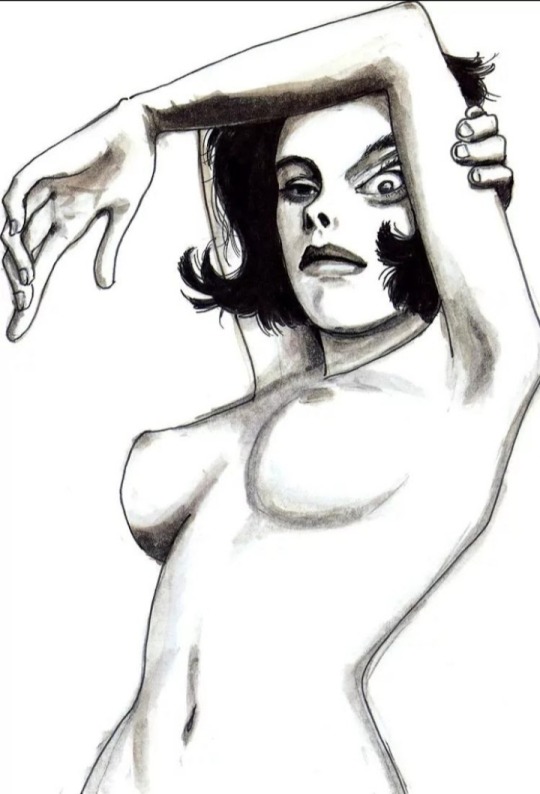
#feminist#kyoko okazaki#pink#tokyo girls#helter skelter#river's edge#manga#manga recommendation#josei manga#iwd
318 notes
·
View notes
Text
SHŌNEN-AI/ YAOI/ BL
SHŌNEN-AI
This subgenre of shōjo, which means love between boys, was born in the 70s by 2 mangakas belonging to the Year 24 Group, Keiko Takemiya and Mōto Hagio.
When these mangakas shared a flat on the outskirts of Tokyo, they became friends with their neighbor Norie Masuyama, a fan of comics and homosexual boys. Masuyama was responsible for introducing the two mangakas in the love between two men with films like "Les amitiés particulières" and with the gay magazine Barazoku, despite being aimed at men, it had a large number of female readers.

Keiko Takemiya not only got hooked on this kind of romance and boys, but also created the first non-doujinshi (self-published fanzine/fanfiction) manga Yuki to Hoshi to Tenshi, which was later renamed Sanrūmu Nite. Although the first serialized shōnen-ai manga was Jūichigatsu no Gymnasium by Mōto Hagio.

♡ sanrūmu nite (1970)
♡ Jūichigatsu no Gymnasium (1971)
Let's go back in time to an event that better explains the essence of these manga. In 1964 the Vienna Boys' Choir visited Japan and caused a great furore. These young boys with a Caucasian beauty lived in a boarding school. And this is very tied to the shōnen-ai as the main elements other than romance was that they were all bishōnen (young handsome boys) who lived in boarding schools in Europe.
The most important shōnen-ai and those that really marked the beginning of everything were Tomā no Shinzō (the heart of Thomas) by Mōto Hagio and the great Kaze to ki no uta (The Poem of Wind and Trees) by Keiko Takemiya, a manga that took Takemiya 9 years to be published as she wanted, without censorship or any kind of change and it is the first manga in which there are clearly kisses between boys.

♡ The heart of Thomas (1974-1975)
♡ The Song of Wind and Trees (1976-1984) spanish
These manga could be published since the story did not take place in Japan and no Japanese name appeared.
Shōnen-ai is a term in disuse in Japan due to its pedophile/ephebophile connotations. In the West I have seen it defined as a genre of gay love without explicit sex scenes, but I repeat that in Japan it is no longer used, what is more it hasn't been used since 80s, unless it is to refer to manga like those named before.
JUNE (1978-2012)
It was the first exclusive boy's love magazine and the longest running. It began publication after the popularity of Keiko Takemiya and Moto Hagio's shōnen-ai manga. June at first could not contain explicit sex scenes, obviously was still marked by the tendency of the bishōnen and manga by both amateurs and mangaka with importance were being published. It was so popular that for a time this genre was called June. Not everything that was published in this magazine was manga, you could find above all doujinshis, some musicians like David Bowie or Queen, LGBT articles and poetry or photos.

Due to the growing popularity it was divided into other magazines, among them shōsetsu June (1982) that contained both manga and doujinshis aimed at a more adult audience since they contained more explicit scenes. The original June changed its name to Comic June and still had a fairly mixed content. Another of the magazines in which it was divided was Koi June (2006-2009) in which a gay p0rn DVD was included. Yep
Its last publication was in december 2012.
YAOI AND DOUJINSHIS
Yaoi is a contraction of "yama nashi, ochi nashi, imi nashi" which means without climax, without ending and without meaning. The god of manga Osamu Tezuka used this term to refer to manga that were not of good quality. Yaoi partnered with love between men due to the large amount of Doujinshis of this kind that began to emerge.
The doujinshis (fanzine or fanfiction) were generally self-published oneshot manga, many of these were focused on sexual encounters (although doujinshi is not synonymous of h3ntai) of some ship that the author liked. Japan was filled with Captain Tsubasa doujinshis, they even made a game parodying the manga, obviously with a gay theme.

♡ doujinshi Ken Wakashimazu x Kojirō Hyūga
Captain Tsubasa was followed by anime/manga like Saint Seiya, Slam Dunk or a little more current like One Piece or Naruto
Doujinshi were heavily marked by the character structure of seme (active) and uke (passive). The seme used to be bigger, stronger and even older in age range (though not always) while the uke was more fragile and "feminine". Nowadays much more is played with roles and also with versatility (suke), it depends on what each one wants to find.
In the current doujinshi regarding shōnen-ai, some changes are noted, such as not all the characters are bishōnen, older boys appear and the stories take place in Japan or have a Japanese character.
I have also seen that yaoi is defined as those manga that do contain sex and more adult plots, but no, yaoi could be used when we refer to doujinshi but not to boy's love manga as such, because yaoi is a pejorative term.
- So if yaoi is a pejorative term, why is it used outside of Japan?
Internet begins to gain strength and with it is easier for doujinshis published in Japan to reach the West. These Doujinshi were cataloged as "Yaoi" which made them associate one thing with the other. With the rise and demand for BL works, magazines appeared outside of Japan, such as Yaoi Zone (in Spain), which collected fanzines made in the country, and Yaoitype (in Spain too), which this time were doujinshi from Japan and included promotional material of video games and a DVD. In these magazines, for example, the content was divided into two: Shōnen-ai if it did not contain sex and yaoi when it did contain. If the "information media" are the first to misuse the terms, it is normal that later people do not use them correctly.

Having said all of the above, I doubt very much that Natsuki Kizu, mangaka of Given, is excited to know that there are people who classify her manga as yaoi, which in Japan would be equal to an offense towards her work.
I have found that BL focuses on romantic relationships between boys, who do not necessarily have to be "gay" they simply have fallen in love with a boy (that makes you bi or pan that I know) and have a happy ending. Spoiler alert, it's not true. Everything that I have named above, whether it has sex or not, happy ending or not, is classified as BL in Japan and in the West we should stop using the term yaoi since there are mangaka that bother them that their manga are cataloged that way because there are people who refuse to read them.
BL (BOY'S LOVE)
Before I mentioned that for a time the boy's love genre was known as June, but with the appearance of new magazines in the 90s like Be x Boy (1993) a new term was needed to refer to this genre and one that did not have negative connotations.

♡ Given (2013-) Natsuki Kizu
- english/ spanish
♡ Happy Kuso Life (2021-) Harada
- won the BL Award 2021
- spanish
Not everyone agreed with BL or liked it, so during the 2000s it emerged as a misogynistic insult towards girls who consumed BL Fujoshi (rotten girl) pointing out that they were not suitable for marriage. Over time, the girls took over the insult to refer to themselves as rotten BL fan girls. Fudanshi would be the way to refer to a BL fan boy, although in Japan it is also used when a gay boy introduces himself as it is better seen than saying that he is gay directly. and finally Fujin, who are non-binary people who are fans of BL.
Specialized manga and anime stores began to have exclusive BL sections and in Japan alone it moves about 2.200 million yen a year.
Fujimoto Yukari, a professor at the Faculty of Global Japanese Studies at Meiji University. She is a specialist in manga cultural theory and gender representations. Yukari affirms that the appearance of this type of couples in fiction has not helped Japan to accept them in reality, unlike countries like Thailand or Taiwan where the BL has great importance when it comes to normalizing people who belong to the LGBT community.
There are still two other terms to see and that I did not know before:
BARA AND GEI KOMI
Bara or ML (Men's Love) was born in opposition to BL and as a subgenre of h3ntai. Unlike the BL in the ML the characters are adult men, corpulent and with hair on their bodies. It is said that Bara is made by and for men, since BL is made by and for women (which is not entirely true since there are male mangakas who do BL, for example Peyo with his Boy Meets Maria manga). These words are not intended to exclude anyone, they are just genres to give people an idea of what they are going to read. By the way, the term Bara comes from a gay magazine that was born in the 60s that I mentioned before, exactly Barazoku.
Gei komi can be summed up as the not-so-explicit or not h3ntai version of the Bara and they usually deal with the normalization of the LGBT community, focusing more on gays.

♡ BARA: House of Brutes by Gengoroh Tagame
- english/ spanish
♡ GEI KOMI: My Brother's Husband by Gengoroh Tagame
- english/ spanish
CONTROVERSY WITH BL
In the mid-90s, an article in a little-known Japanese feminist magazine claimed that BL fetishized gay boys and assigned them a series of beauty canons. if there is a bit of truth in that statement, the doujinshis were born from the fantasies of women towards gay boys, but at no time did they claim to be LGBT icons. On the other hand, some boys thought they were the only gays in Japan and when they read stories like The Song of Wind and Trees they no longer felt so alone.
Thanks to those criticisms, BL continued to evolve and today it is a genre in which thousands of different scenarios and stories can be developed, but always focusing on boy's love.
If you want to know more about BL, its development, history, culture and the LGBT community in Japan along with more examples and technical names, I recommend the book Boys Love Manga and Beyond. Here you will find 100% official information. English
#yaoi#bl#boy's love#shounen ai#Shōnen-ai#manga#given#kaze to ki no uta#the poem of wind and trees#japan
12 notes
·
View notes
Text
SHŌJO
Shōjo means young girl and in this case it is a manga demographic that represents this type of teenage girl. It is nothing more than a suggestion for the public to get an idea of what type of person it is aimed at, it is not intended to exclude anyone. Being a demographic or category it can really deal with any genre, like for example sci-fi with Hajime Yadate and Yutaka Nanten's Cowboy bebop manga, or it can have more adult plotlines like Ai Yazawa's Nana case. Shōjo is not synonymous of romance, although it is the genre that most abounds in this category.
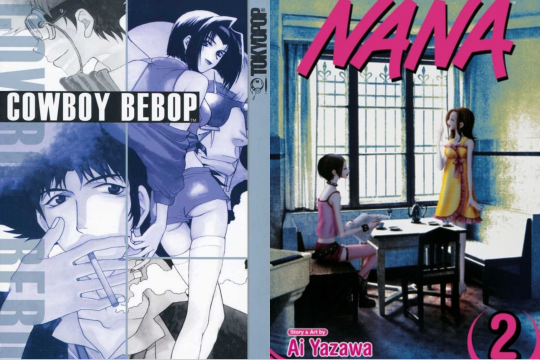
Nana Spanish / English
Did you know that horror manga is a shōjo thing? Well, that's right, great mangakas like Junji Ito or the proclaimed Queen of Horror manga, Kanako Inuki, have published their works in shōjo magazines.
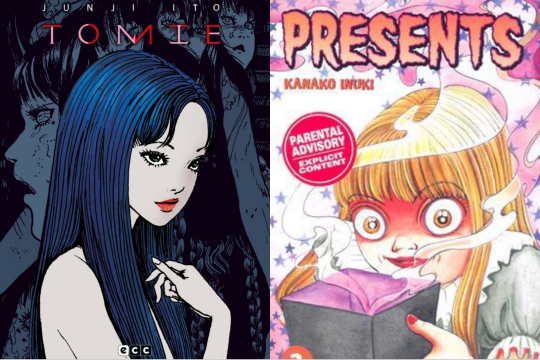
Tomie Spanish / English
Shōjo was born at the beginning of the 20th century with the appearance of magazines that were aimed at young girls. These magazines are nothing like today's, which only publish manga stuff. The content of the old ones was very varied, they used to include poems, articles, many illustrations, etc. but not manga. It was not until 1910 that the "manga" began to emerge, they were comic strips with four vignettes and a single page.
The first shōjo magazine to appear was Shōjo Kai (1903-1912), Shōjo Sekai (1906-1931) was the next and among the first to appear, the one that was surely the most important and the only one that survived the war was Shōjo no Tomo (1908-1955). A few years later a magazine of great importance would also begin to be published, the Shōjo Club (1923-1963).
Shojo magazines taught girls to be good mothers, good wives and good housewives, that is, "prepared them for their future". Whereas Shōnen magazines were full of boys having adventures and being great heroes.
(Giving the role of heroine to a girl was not something that was given much thought back then)
SHŌJO NO TOMO
In this magazine, women like Nobuko Yoshiya, who was a feminist, lesbian and a pioneer in lesbian literature, published some romantic stories, which was what she was most characterized. And Akiko Yosano who was a poet, feminist, social reformer and pacifist published some of her poems. but I am not going to focus on them.

In 1936 "Nazo no Clover" is published in Shōjo no Tomo, a work by Katsuji Matsumoto (1904-1986) that was forgotten and recovered in 2006. It was very innovative for the time and possibly a pioneer/prototype of the most current manga. It was a 16-page manga with a protagonist (reminiscent of "Zorro" but in a female version) who saves the peasants from the abuses of the nobility. We already have what would be the first heroine of the manga

After the arrival of the 2nd World War, the content of the shōjo magazines changed completely, now they only included war and patriotic topics. In addition, the girls left the housework to start working in factories. During this time the manga enters a void from which it does not recover until after the war.
After the war and with a Japanese society that continues to pay the consequences, the Kashi-hon became popular. The Kashi-hon were bookstores for rent, where girls (and boys too) could rent Akahon manga for 5 yen, which were like manga with reddish covers.
Post-war shōjo magazines were full of men who didn't know what girl readers wanted to find on their mangas. The reason why they worked for this type of magazine was because they wanted to gain fame to publish shōnen, that's why the shōjo manga of this time is boring and lacks plot (few authors are saved).
Machiko Hasegawa (1920-1992) was the first woman to make manga, with her work Sazae-San (1946). But the pioneer in shōjo manga was none other than Toshiko Ueda. She apprenticed with Katsuji Matsumoto and won several awards, including the Japan Cartoonists Association Excellence Award for her manga Ago Bāchan (1989) and the Shōgakukan Manga Award, one of the most prestigious manga awards.

Fuichin-san (1957-1962) (has a movie)
60s
After Shojo no Tomo (1955) disappeared and during the 60s, new magazines began to appear, such as Nakayonshi (manga such as Sailor Moon or Candy Candy have been published in it) by Kodansha (1954) or Ribon (1955) by Shūeisha. This same company also publishes Margaret (1963), the first time it was released it had 50% female mangaka (something that is incredible considering where we come from) and in 1969 90% of the mangaka who published in this they were women. These magazines were still not entirely manga and had fashion articles for example.
Some of the most outstanding mangaka of this decade are: Masako Watanabe, Miyako Maki, Hideko Mizuno and Yoshiko Nishitani. These women, unlike their male colleagues, knew how to connect more with their female audience since their protagonists were girls who were much more like reality, they were complex and had concerns, they laughed and cried, they fell in love and were disappointed.
MASAKO WATANABE (1929-)
is one of the most popular shōjo mangaka of this decade and is still very popular in Japan. She is still active and dedicating herself to manga and at the age of 91 she published her new work Himegoto. she is a diva

♡ Glass no Shiro (1969)
♡ Saint Rosalind (1973) horror shōjo
MIYAKO MAKI (1935-)
married the popular mangaka Leiji Matsumoto, they created some works together and she helped him create stronger female characters. Miyako won several awards such as: The 3rd Prize for Excellence from the Japan Cartoonists Association and the Montreal International Comic Contest Prize.

♡ Ha ha Koi Waltz (debut 1957)
♡ Maki no Kuchibue (1960)
MIZUNO HIDEKO (1939-)
liked the United States a lot and lived there for a while, which served as inspiration for her mangas. These were full of controversial topics, such as: racial discrimination, sex, drugs, rock, etc. And they also contained quite a bit of racial diversity.
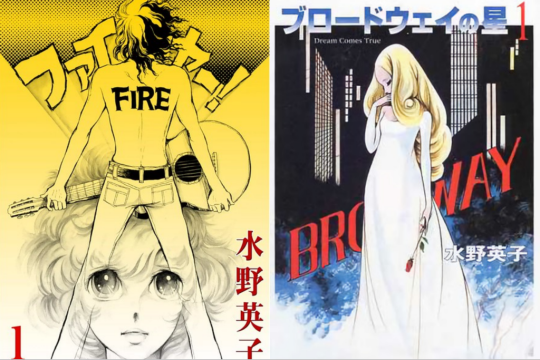
♡ Fire! (1969-1971) the first male lead in shōjo
♡ Broadway no Hoshi (1967)
YOSHIKO NISHITANI (1943-)
created the first shōjo manga in a contemporary high school where the protagonist girl fell in love with a boy and truly managed to hook the female audience. Immediately Nishitani became very popular and there are rumors that she had so much work that she went a month without taking a shower.
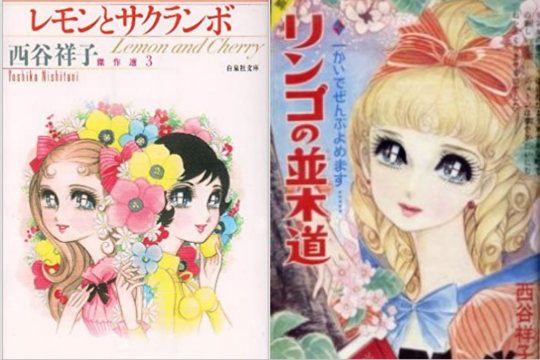
♡ Lemon and cherry (1966)
♡ Ringo no Namikimichi (1965)
These mangakas showed that before the Year 24 Group molds and stereotypes were already being broken. So if their works were so good and innovative, why is the shojo of this time criticized so much? For two reasons:
The critics of this decade were much more focused on manga produced by men, and I've said before that men don't put much effort into shōjo.
It is not until 1967 that the manga begins to collect, so many works published in magazines were lost at the beginning of the 60s and before
Even so, this does not detract from the contribution to the Shojo manga of the Year 24 Group (of which I already spoke).
Shōjo continued to develop aesthetically, as did new genres brought in by the "Year 24 Group" (such as shōnen-ai). And more and more female mangakas are starting to emerge, but I'll talk about all this soon.
67 notes
·
View notes
Text
YEAR 24 GROUP
A group of women who revolutionized the world of shōjo manga and the vision of the female mangaka.
They are known as the Year 24 Group or as Forty-Niners since they were all born around the year 24 of the Shōwa era (1949)
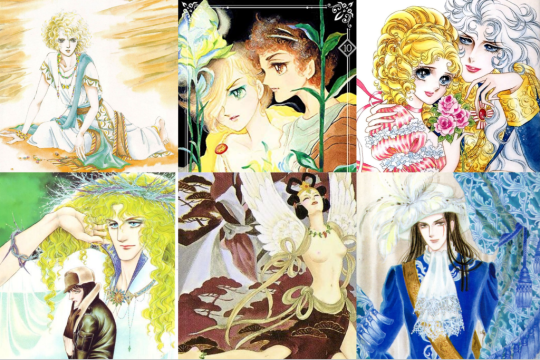
The entrance of women to the dedication of manga as a profession was very slow, since until then being a mangaka was a well-accepted job only for men. Meanwhile, Japanese women were still tied to housework.
But Japan after losing World War II was occupied for 7 years by the United States, which caused changes in Japanese customs. Beate Sirota, an American defender of women's rights, introduced legal equality between men and women in the 1947 constitution. She also gave the right to marriage by mutual agreement and lastly she gave women the right to divorce, to own/buy property and to inherit. Thanks to Sirota, women were freed little by little from being housewives, if they wanted, and were able to dedicate themselves to jobs that were previously considered for men, more naturally.
During the 70s, after the student strikes, the scourge of modernity and the sexual revolution, the mangakas of the Year 24 Group began to debut and the manga stopped having molds.
The Magnificent Forty-Niners cast aside the innocence of the female mangaka that preceded them, yet are aware of their limitations, praise their achievements, and serve as an influence.
The women of the Year 24 Group were by no means conformists, as evidenced in their works and private lives, and made shōjo an exploratory category in which they included new genres that had never been touched before in this demographic. Until now, Shōjo was mainly (if not only) about the simple life of high school girls, it was just about the slice of life. But these ladies gave depth to the characters, filling them with philosophical or existential questions and on several occasions the girls stopped having the leading role. They introduced other genres such as science fiction, shōnen-ai (currently bl, love between two men) or bildungsroman and included elements such as the exploration of sexuality, genderqueer characters, adult women, vampires or rock and roll. And they dared to place their stories in places outside of Japan and in the past.
Moto Hagio was the core of the Year 24 Group and shared an apartment outside of Tokyo with another top Forty-Niner, Keiko Takemiya, for 3 years (1970-1973). Later the apartment became the Ōisumigakuen or Ōizumi Salon, a center where beginner mangaka girls will go to learn about manga, help each other and share ideas.
Gradually they gained popularity. Moto Hagio, Keiko Takemiya, Riyoko Ikeda, Yasuko Aoike, Toshie Kihara, Minori Kimura, Yumiko Oshima, Nanae Sasaya and Ryoko Yamagishi, all of them are part of the Year 24 Group whether they are more or less known in the West, in Japan they won their recognition.
— MŌTO HAGIO (1949-)
Currently she is the best known of the "Year 24 Group". Although she liked to draw since she was a child and in adolescence she was clear that she wanted to dedicate herself to manga, she did not have it easy since her mother didn't like it.
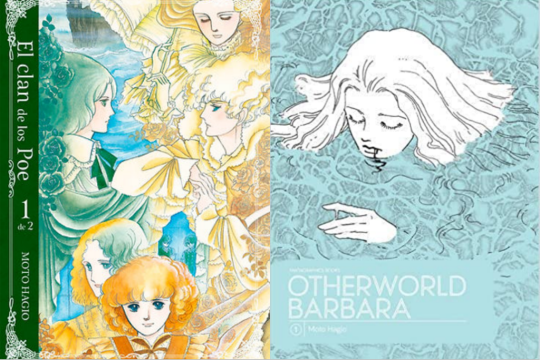
♡ The Poe Clan (1972-1976)
- Shōjo/josei (fantasy, horror)
- Spanish
♡ Otherworld Barbara (2002-2005)
- Josei (science fiction)
- English
—KEIKO TAKEMIYA (1950-)
Is dedicated to the teaching and dissemination of manga and also to preserve and reproduce manga with historical value.
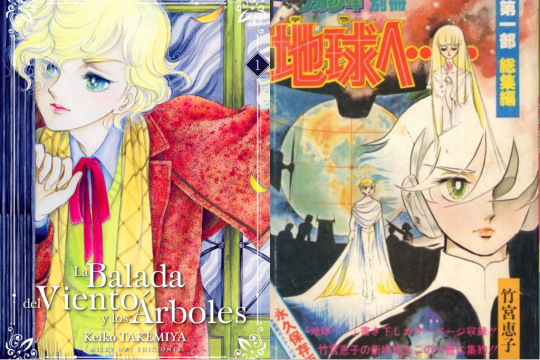
♡ The Song of Wind and Trees (1976-84)
- Shōjo (shōnen-ai/bl)
- Spanish
♡ Tera e... (1977-1980)
- Shōnen (space opera)
- Spanish
—RIYOKO IKEDA ♡ (1947-)
♡ The Rose of Versailles (1972-1973)
Studied philosophy at university while drawing manga, although she finally had to leave his studies due to pressure.
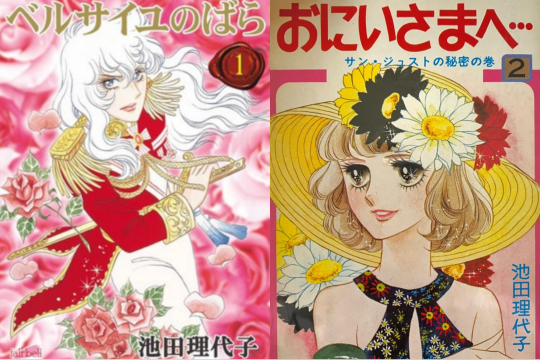
- Shōjo (historical, romance)
- Spanish / english
♡ Oniisama e... (1973-1975)
- Shōjo (drama, slice of life)
—YASUKO AOIKE (1948-)
Debuted at the age of 15 by winning an award from a magazine. The vast majority of her works are or have shōnen-ai elements, since she grew up surrounded by strong men (her family had a construction company).
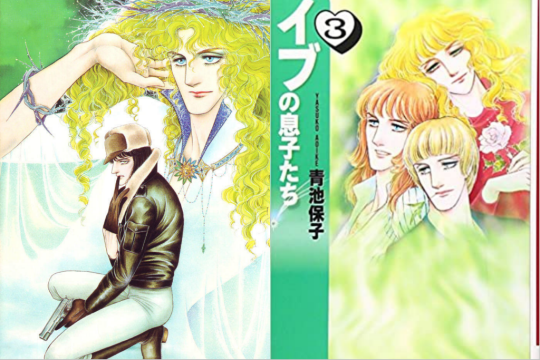
♡ From Eroica with Love (1976-2012)
- Shōjo (comedy, action, bl)
♡ Sons of Eve (1976-1979)
-shōjo (comedy, bl)
—RYOKO YAMAGISHI (1947-)
As a child practiced ballet, an element that is part of many of her works. And she introduced yuri as a genre in shōjo.
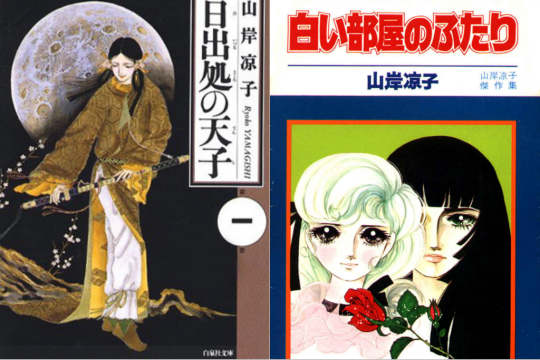
♡ Hi Izuru Tokoro no tenshi (1980-84)
- Shōjo (supernatural, historical)
♡ Shiroi Heya no Futari (1971)
- Shōjo (yuri)
—TOSHIE KIHARA (1948-)
The vast majority of her works are considered Josei, because they are not fanciful or humorous (there are exceptions). Some of her mangas have served as inspiration for musicals performed by the all-female Takarazuka Revue.
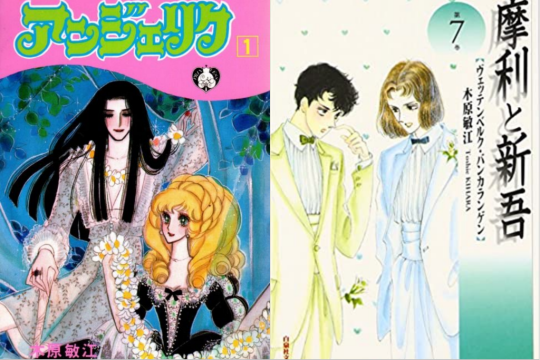
♡ Angelique (1977-1979)
- Shōjo (romance, historical)
♡ Mari to Shingo (1979-1984)
-Shōjo (bl, historical)
—NANAE SASAYA (1950-)
She is the youngest of four siblings. Her father wanted all his children to go to university and become teachers, but she gave it up to dedicate herself to manga. Is known for her horror stories with occult themes.
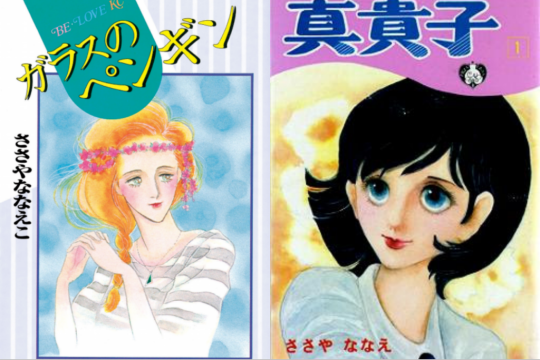
♡ Glass no penguin (1983)
- Josei ( Drama Slice of life)
♡ Makiko (1976)
- Shōjo (romantic comedy)
—YUMIKO OSHIMA (1947-)
Implanted new ways of making manga. Likes characters' thoughts being free on the page instead of in speech bubbles.
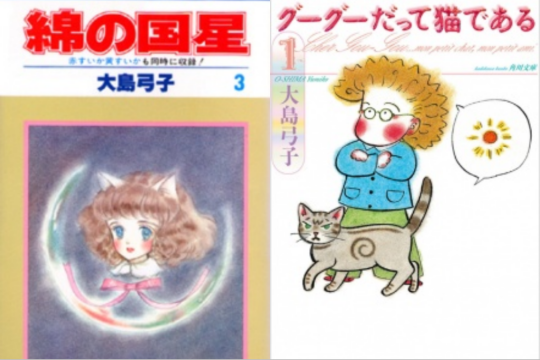
♡ Wata no Kuni Hoshi (1978-1987)
- Shōjo (fantasy, Romance)
♡ Gou Gou Datte Neko de Aru(1996-2011)
- josei (slice of life)
—MINORI KIMURA (1949-)
She debuted professionally at the age of 14 and, despite her very little recognition in the West, she is considered one of the brightest members of the "Year 24 Group". Some of her works are educational and deal with health issues.
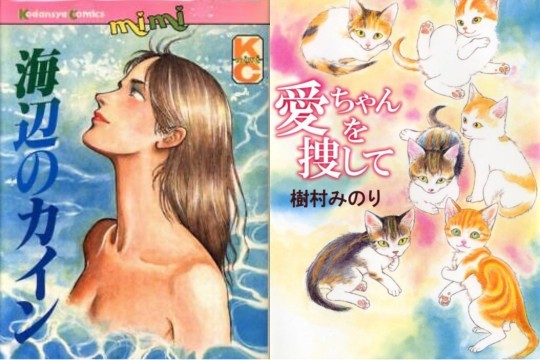
♡ Umibe no Cain (1980-1981)
-shōjo (yuri)
♡ Ai-chan wo sagashite (2011)
- shōjo (slice of life)
The effort of each of them was not in vain. The women of the Year 24 Group have achieved great awards and recognition over the years. They were nominated for 10 years in a row for one of the most prestigious Science Fiction awards in Japan, the Seiun Awards, and won up to 6 times (1978 y 1988). Moto Hagio won the Seiun Award in 1980, 1983 and 1985. They have also been awarded another of the most prestigious awards, but this time it is for manga, the Osamu Tezuka Cultural Award. Moto Hagio was the first person to receive the Osamu Tekuza Award for Excellence (1997). Some years later Ryoko Yamagishi and Keiko Takemiya also won it.
The Forty-Niners were the main and most relevant mangaka, but it doesn't mean that other female mangaka didn't arise during that time. Perhaps they didn't have such a revolutionary ideology or innovative way of making manga as the women of the Year 24 Group, but they also contributed to the world of manga (like Sumika Yamamoto with her manga Ace wo Nerae!)
The mark that these mangakas have left and continue to leave is not small at all. They have reinvented, innovated and set aside the limits. They made great strides despite having many things against them and thanks to all that, their works are classics today and all of them influence many current artists.
177 notes
·
View notes